
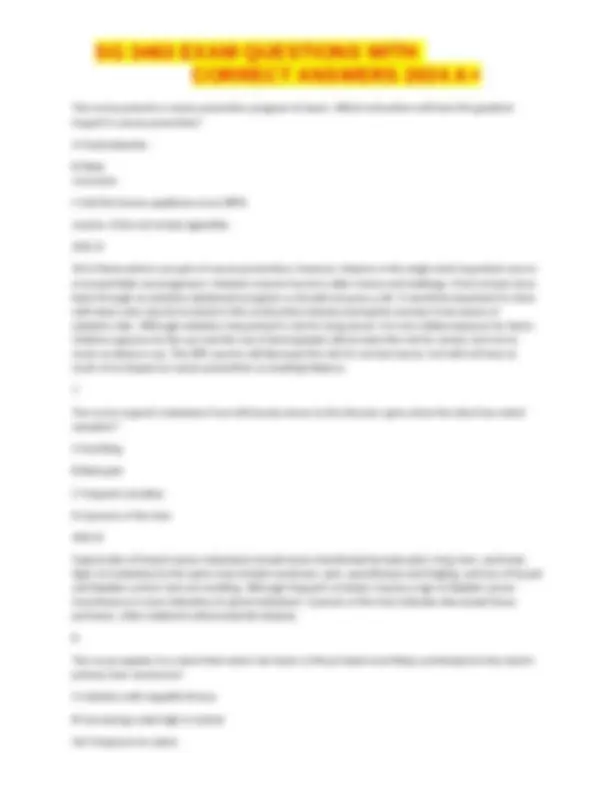
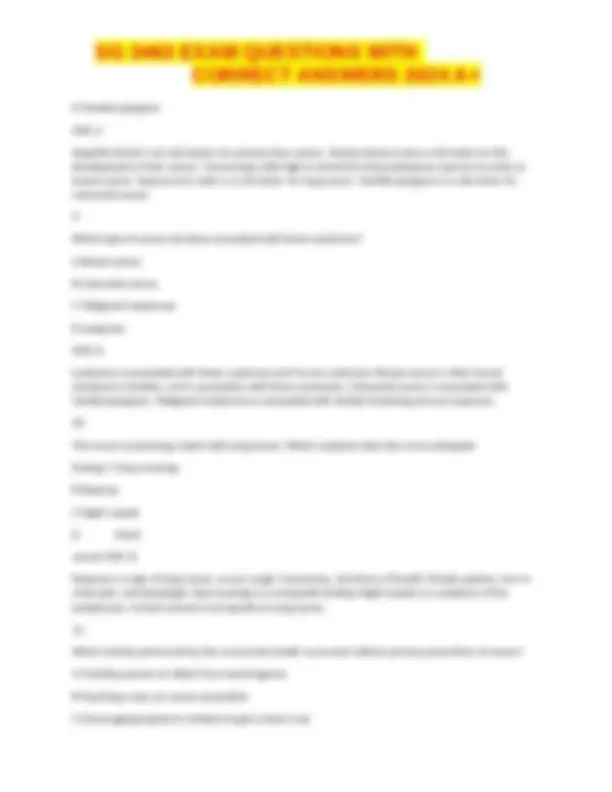
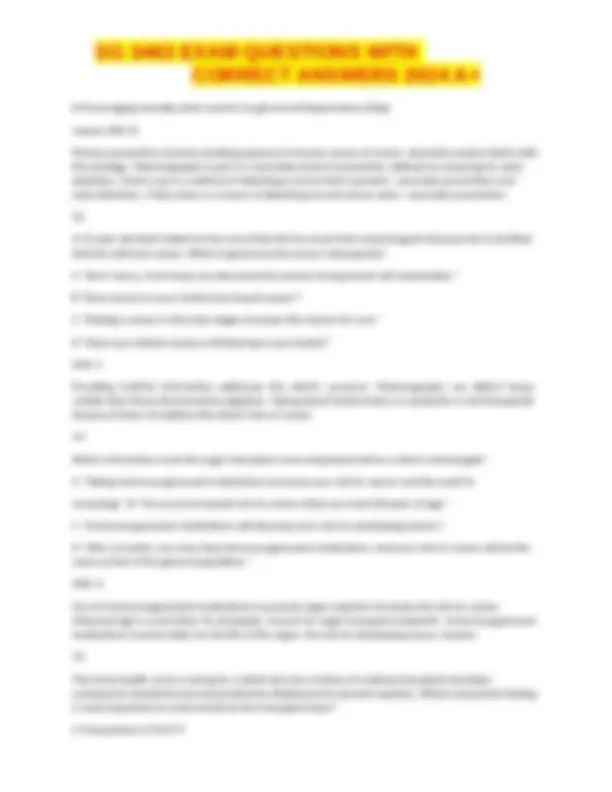
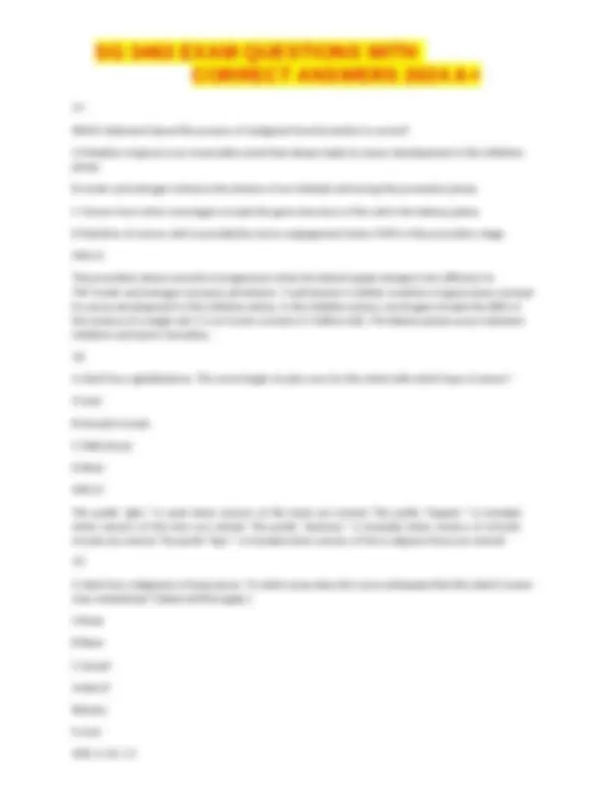
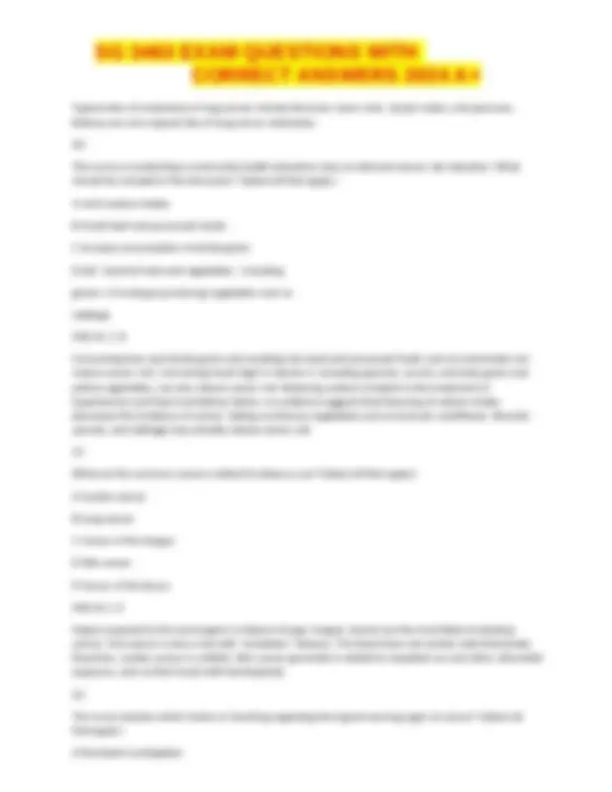
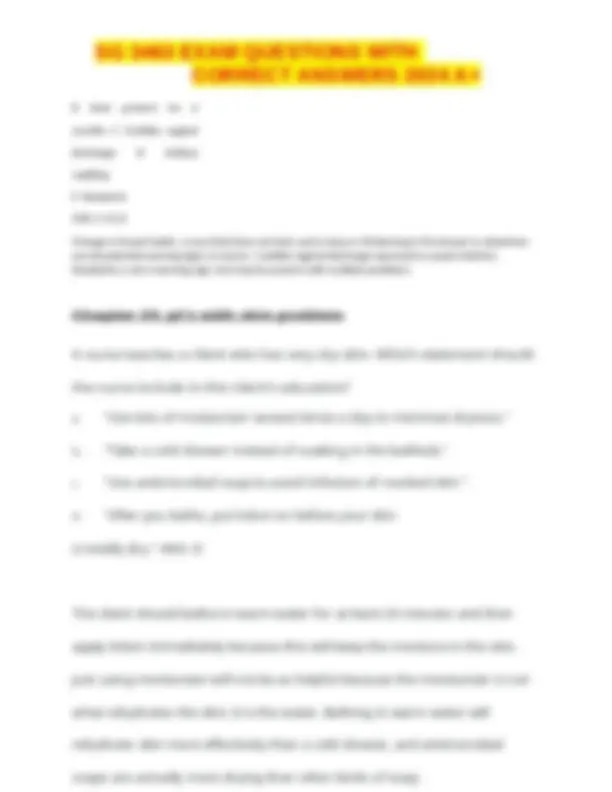
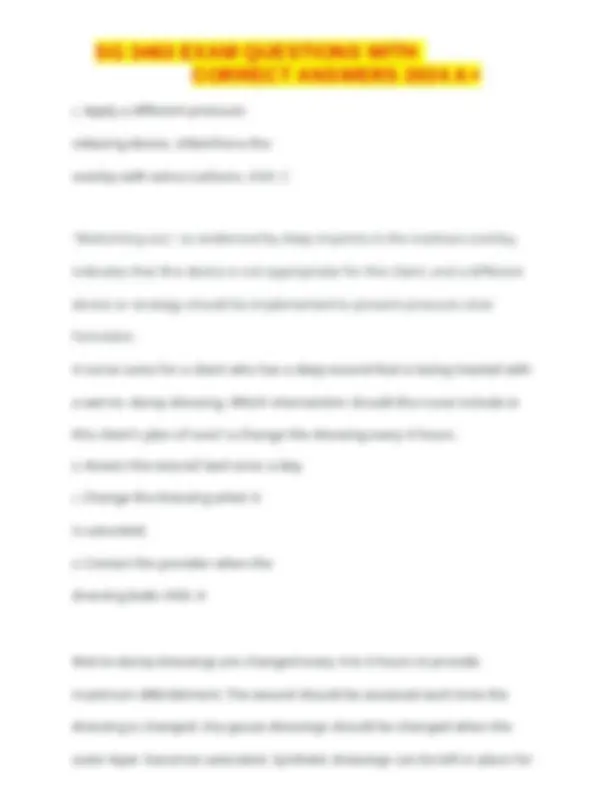
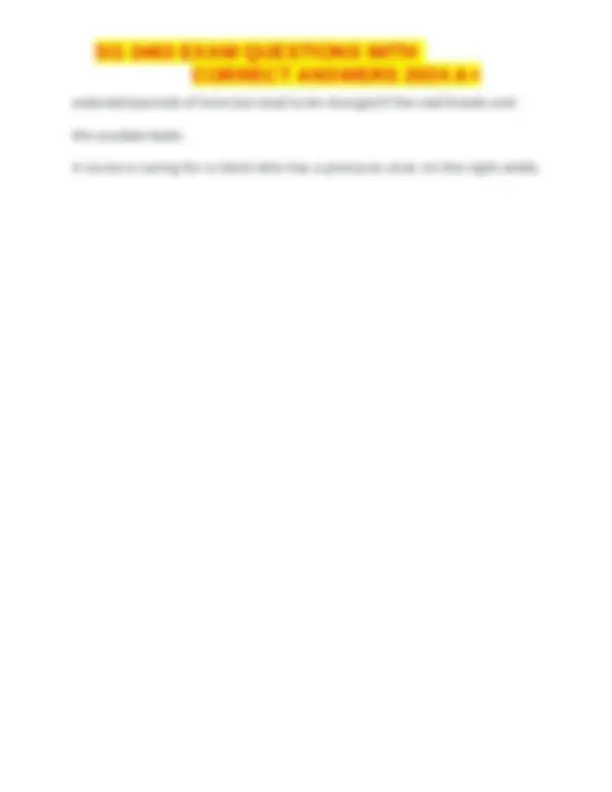
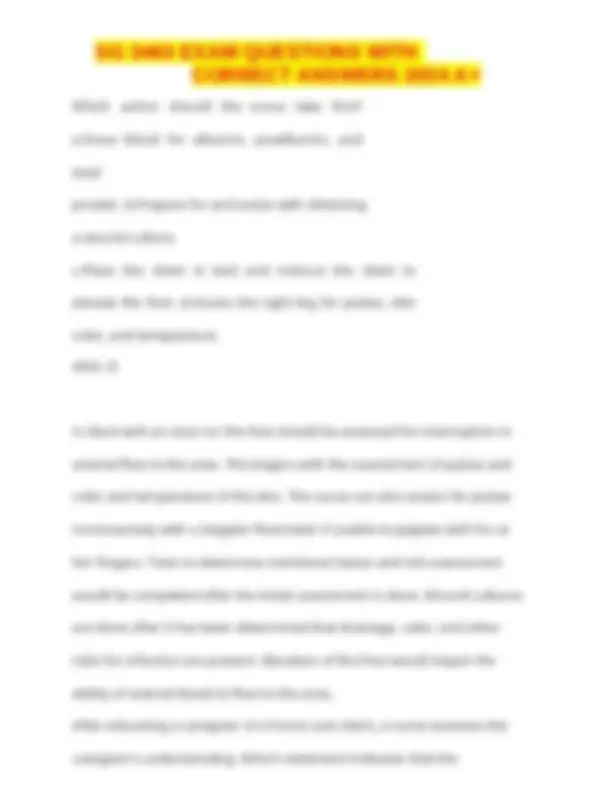
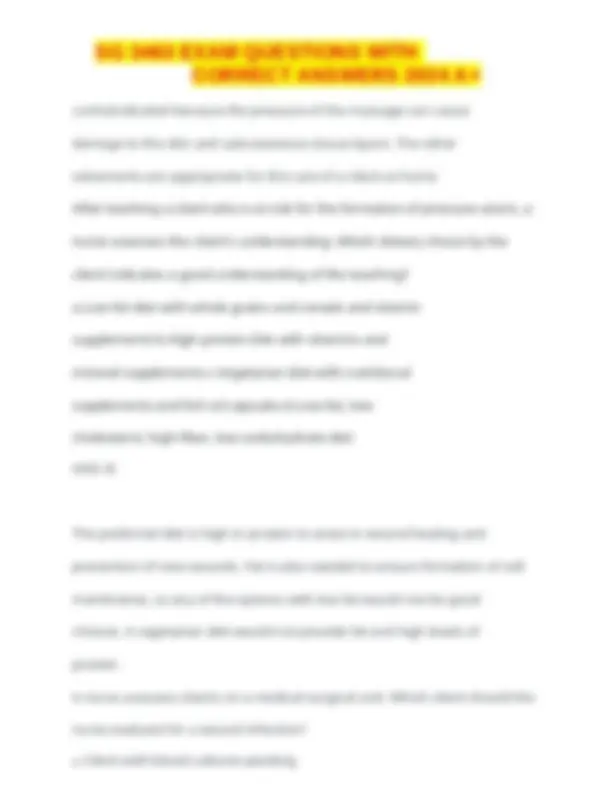
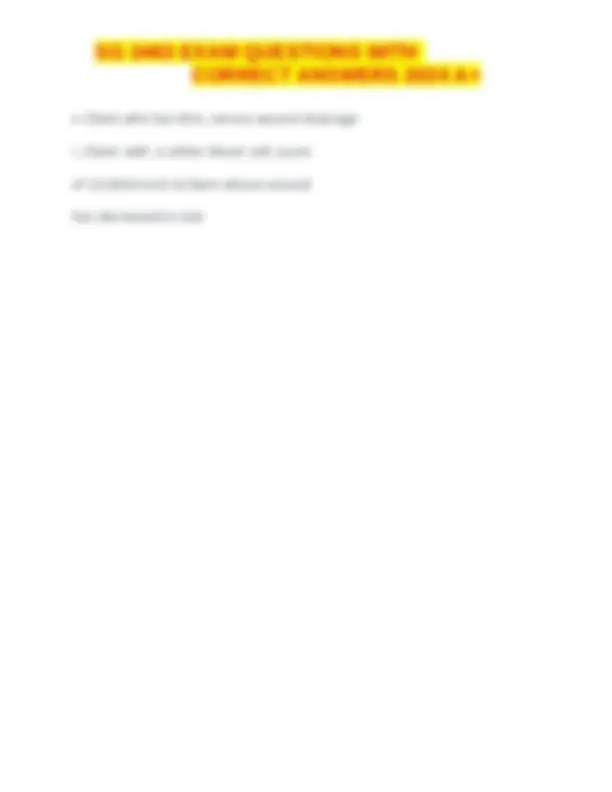
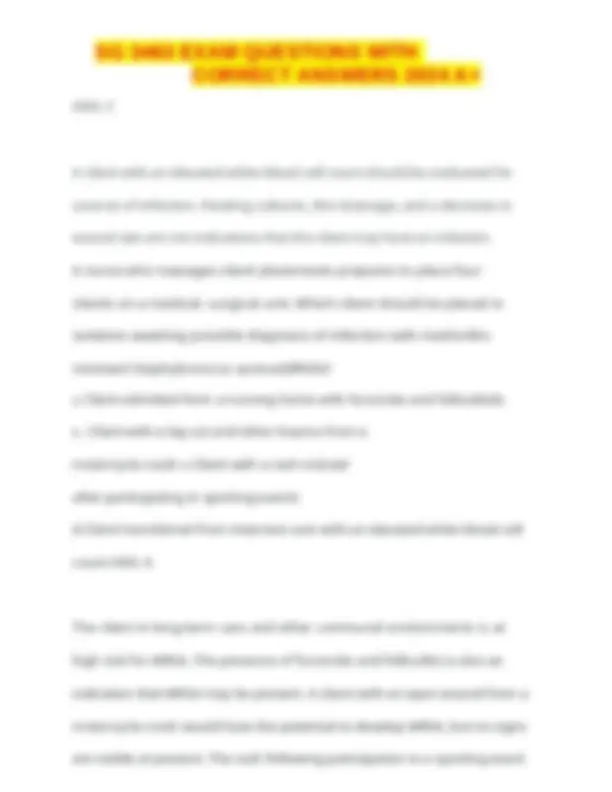
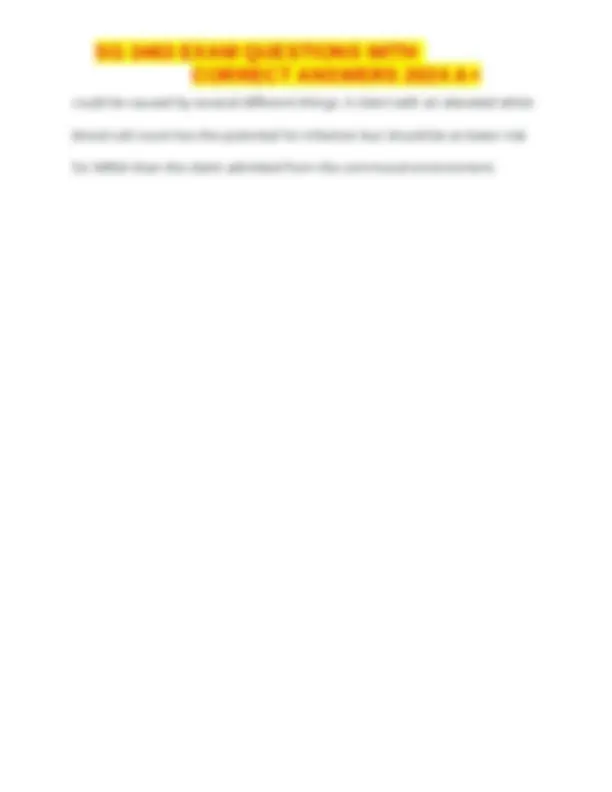
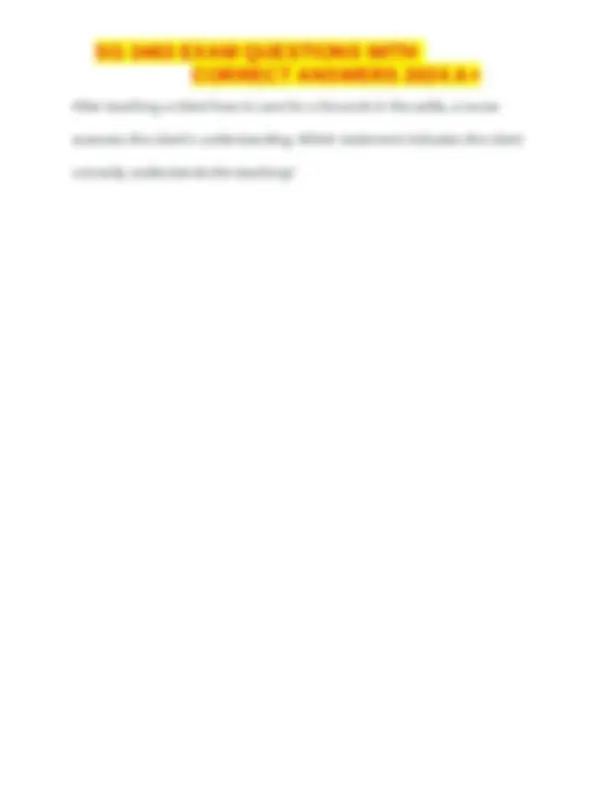
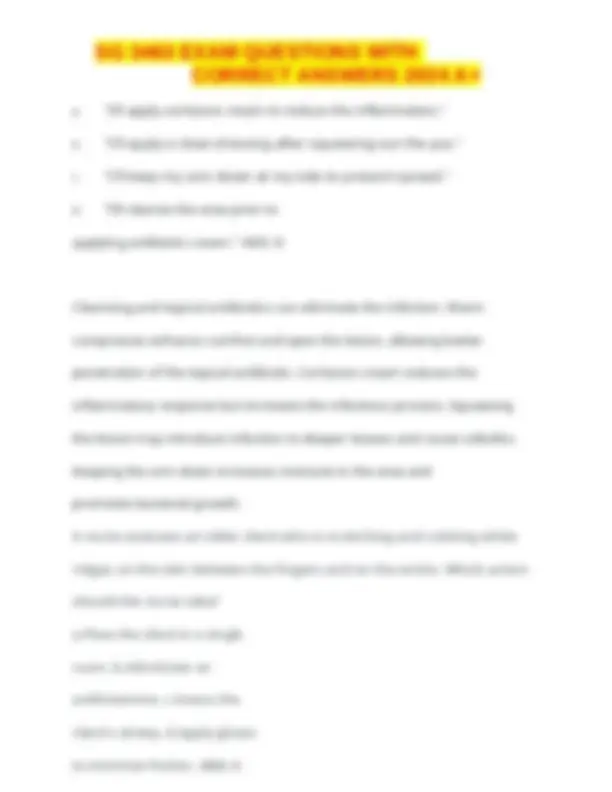

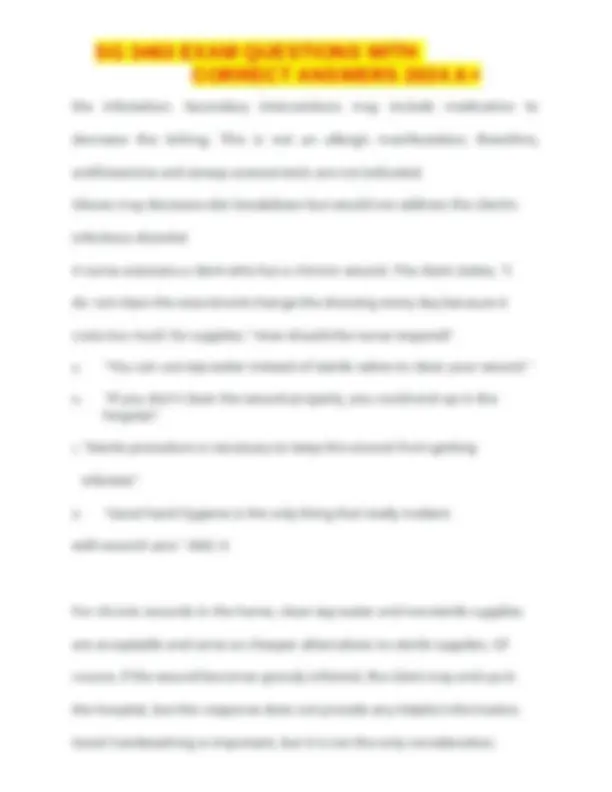
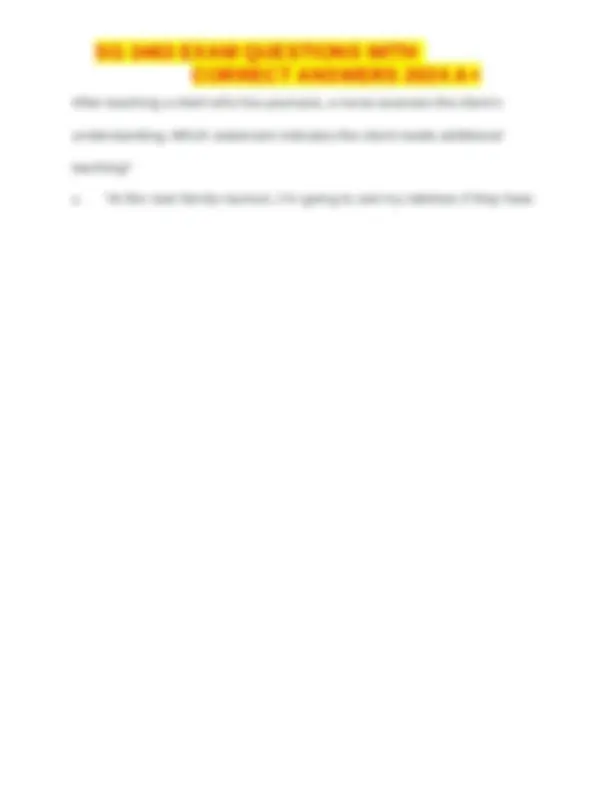
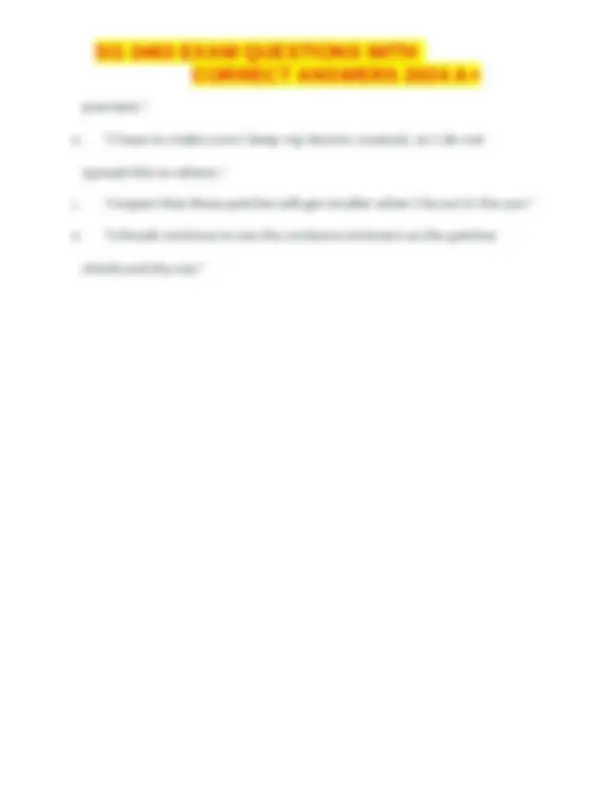
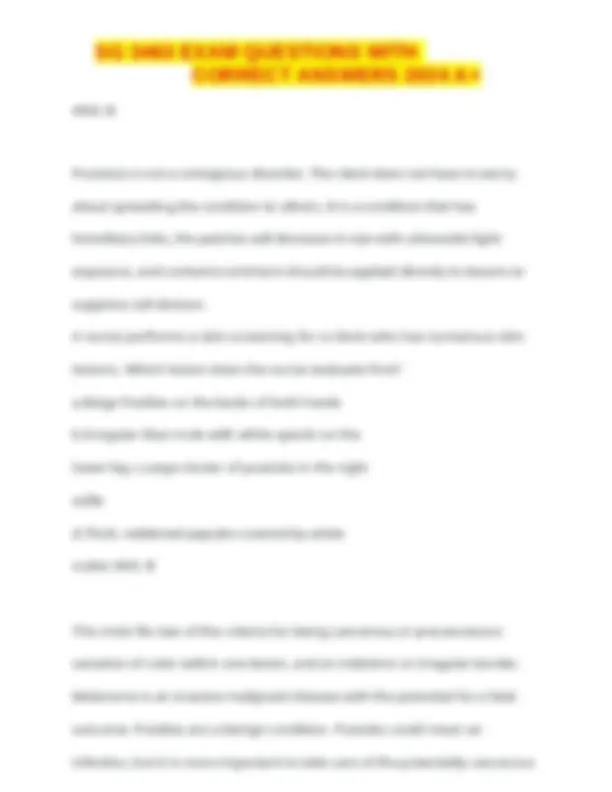
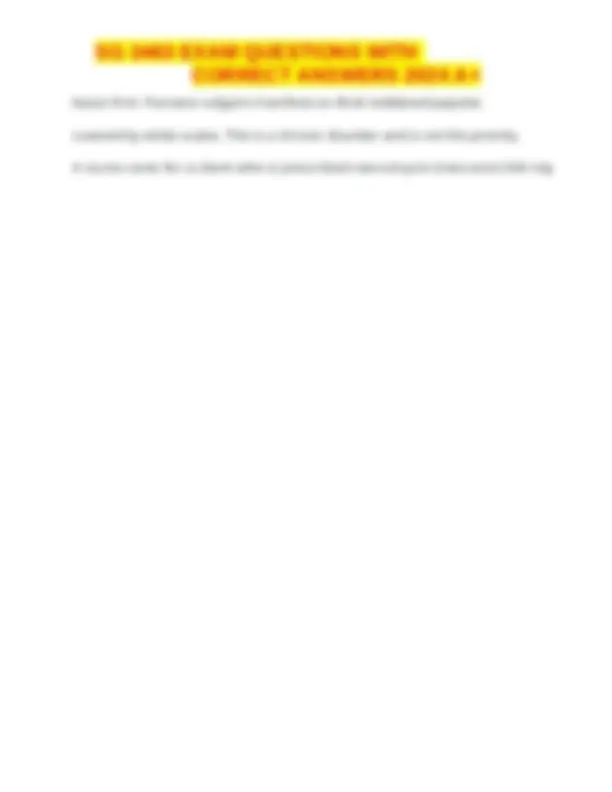
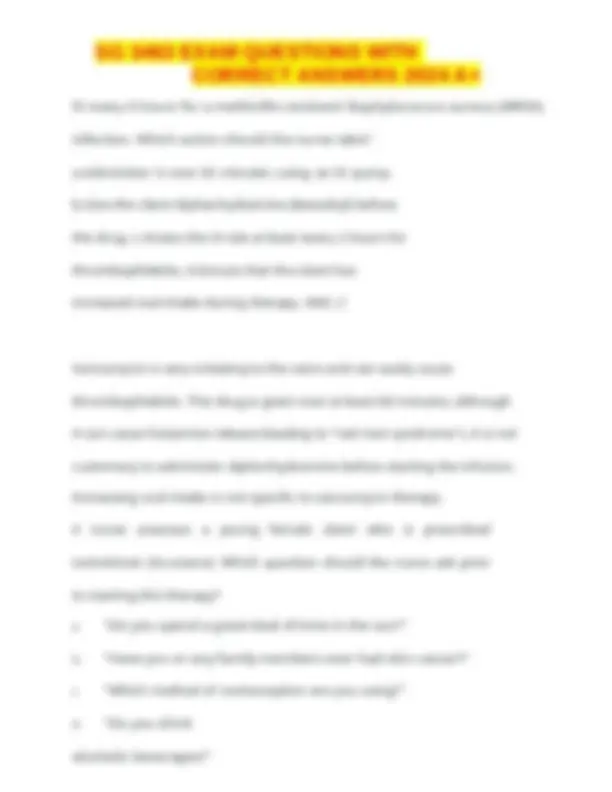
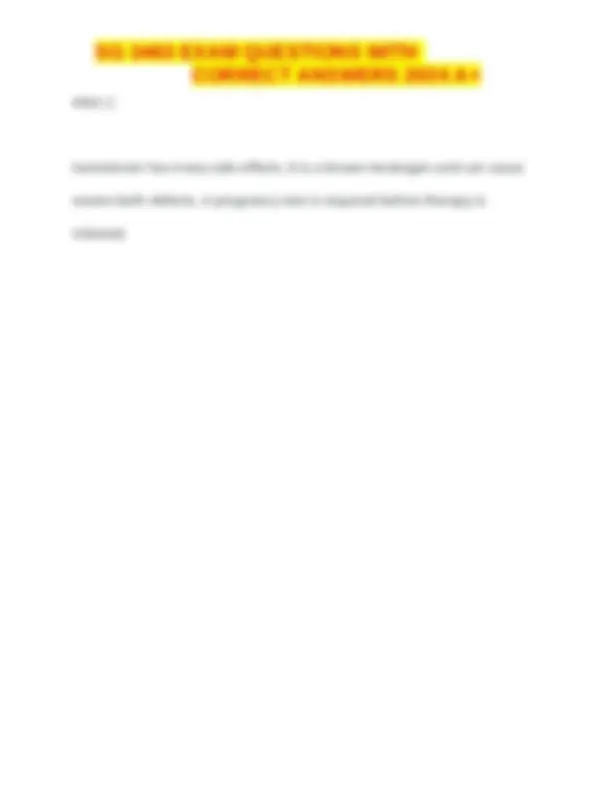
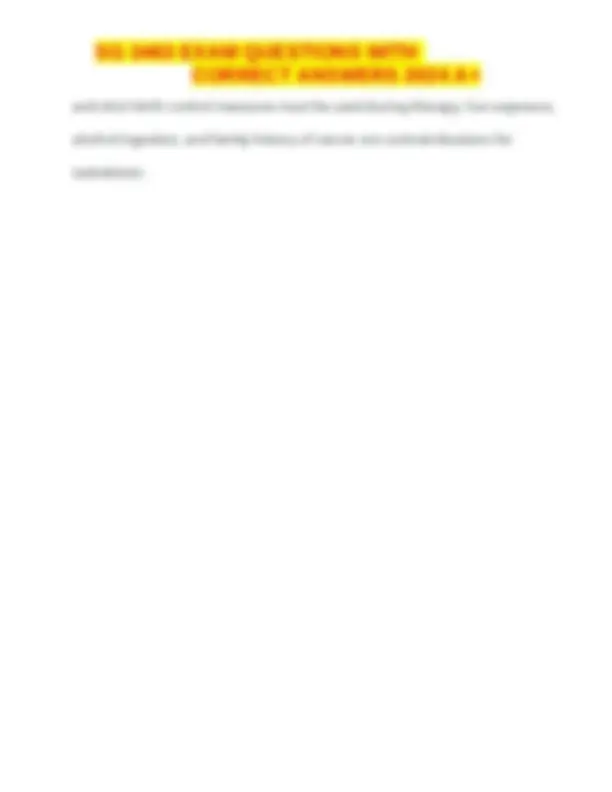
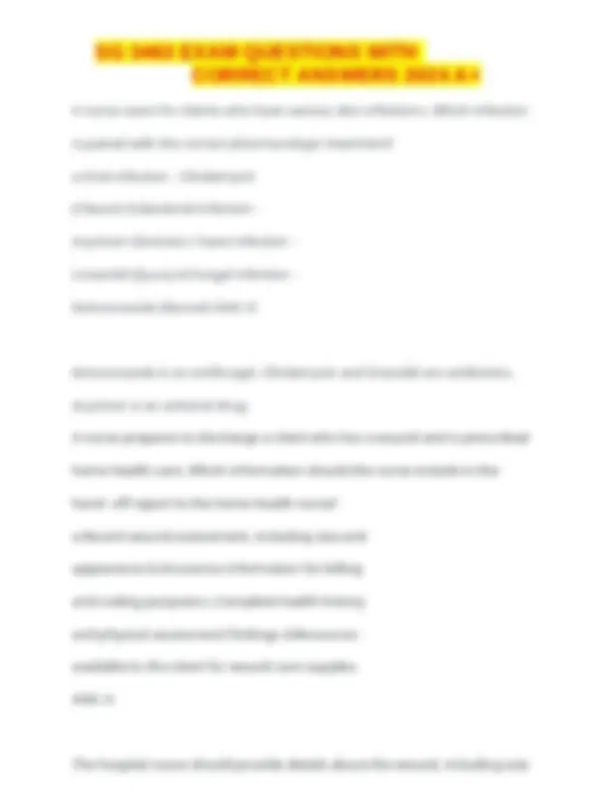
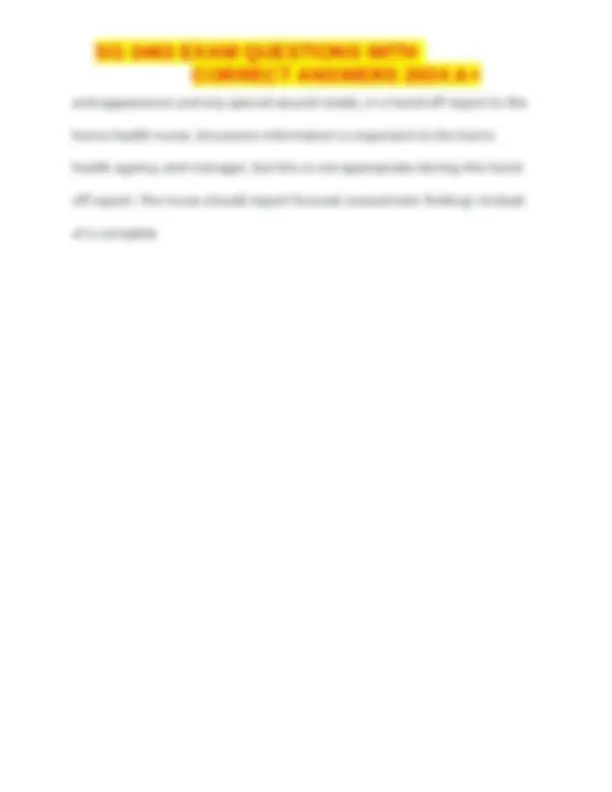
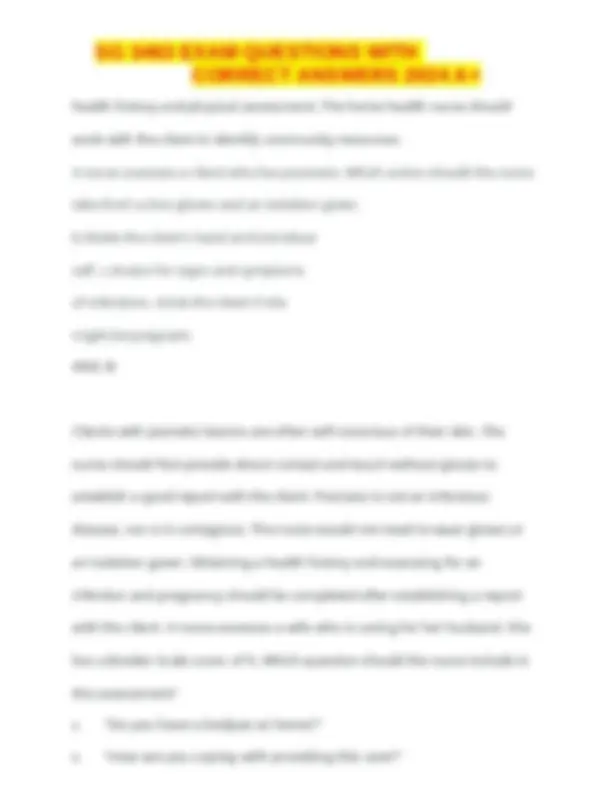
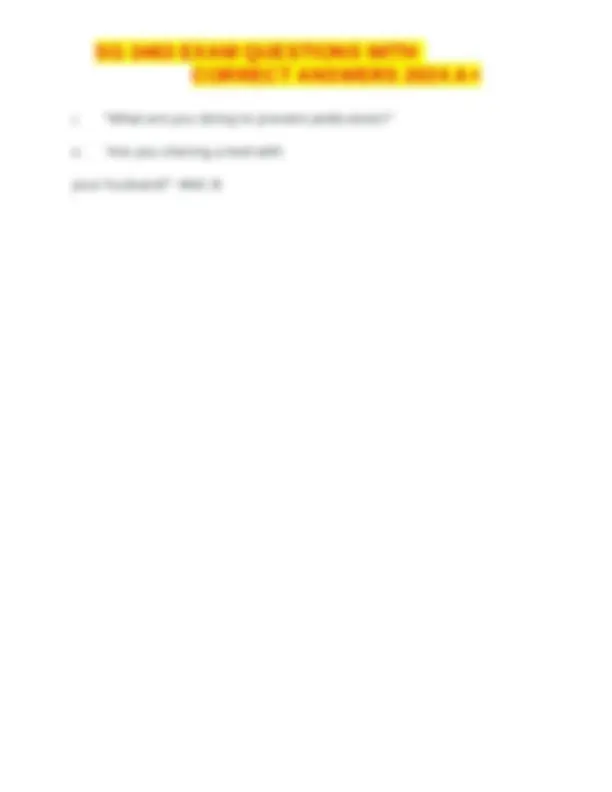
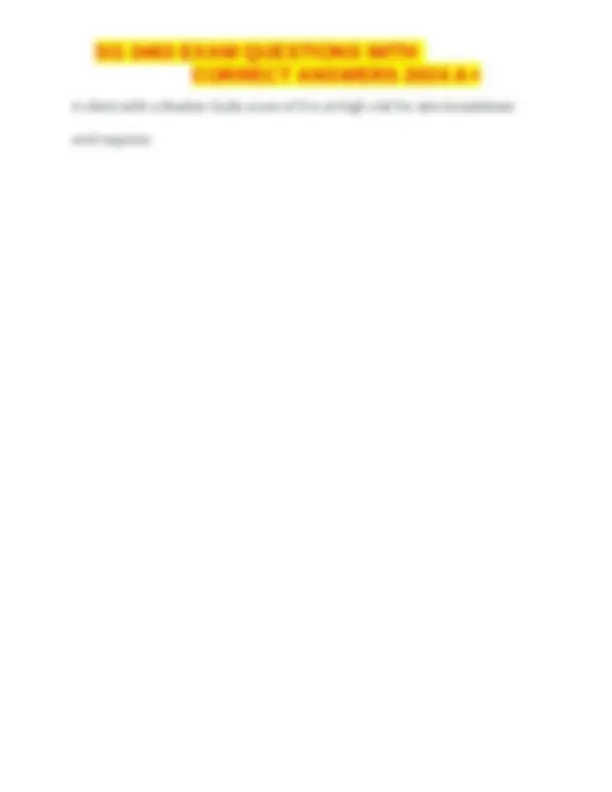
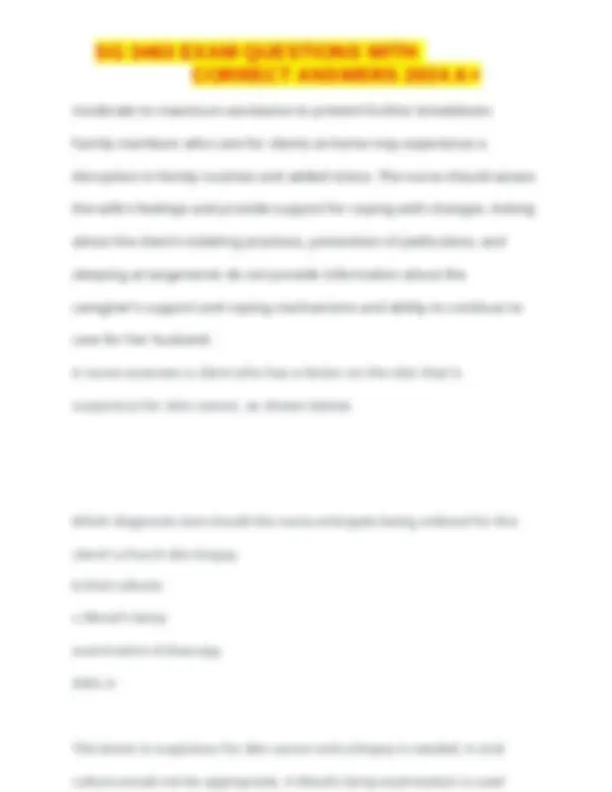
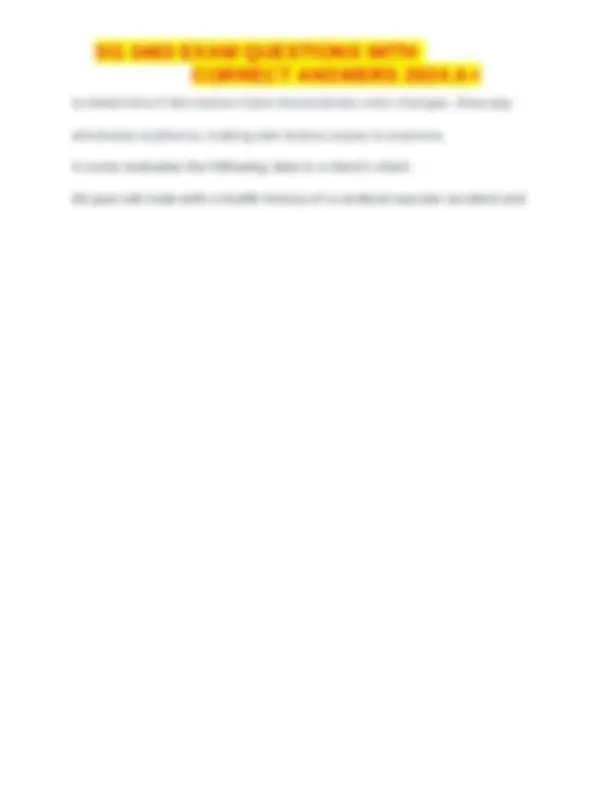
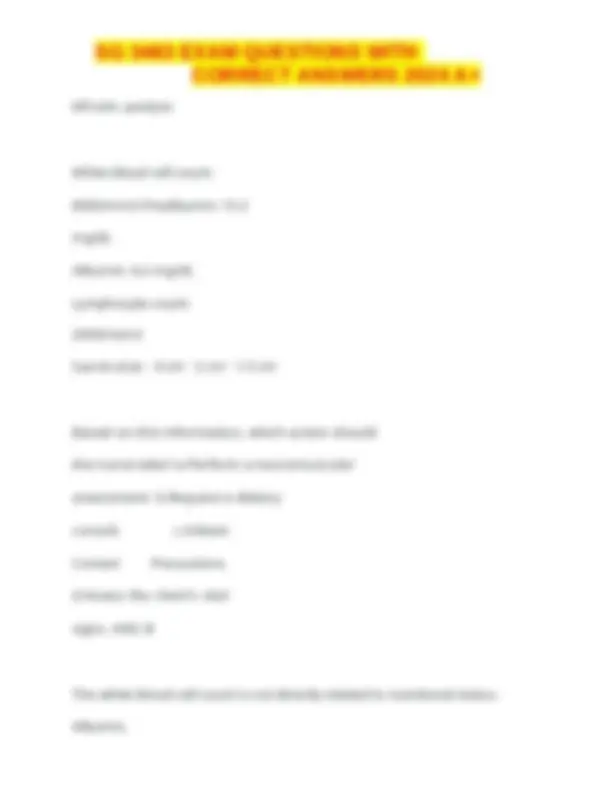
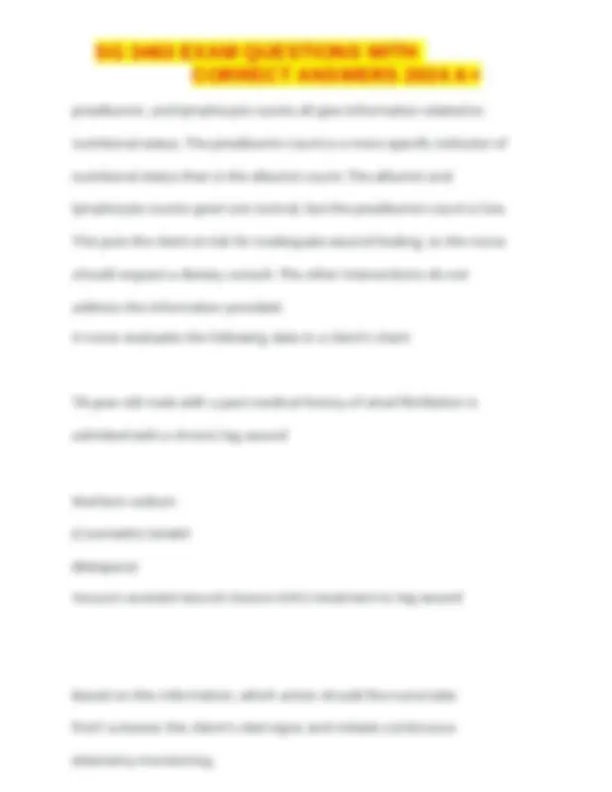
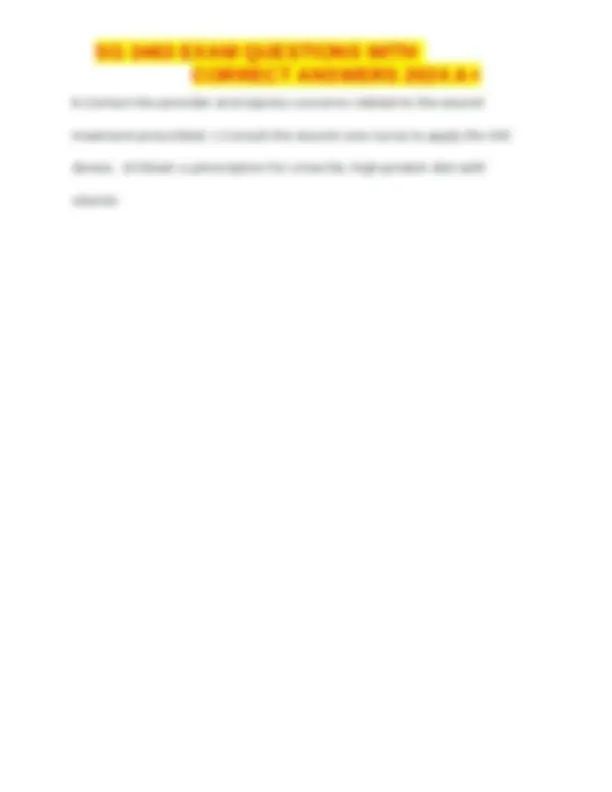
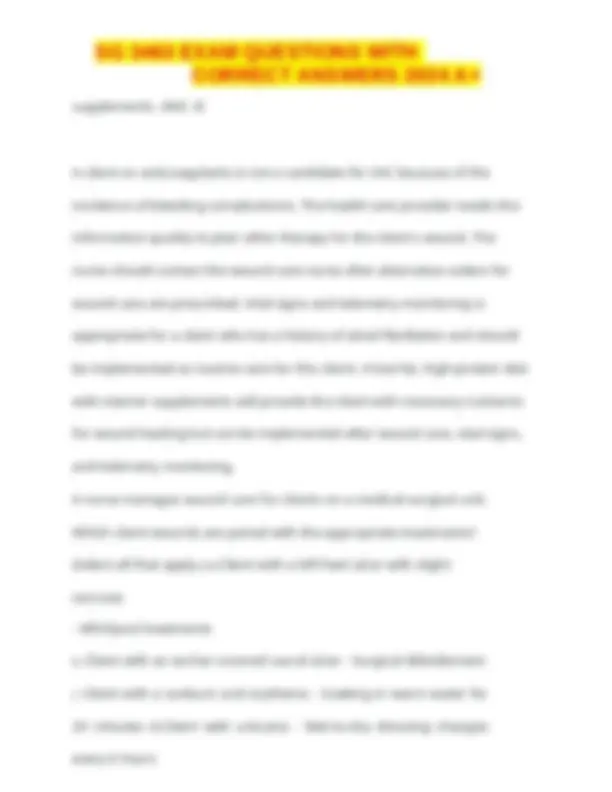
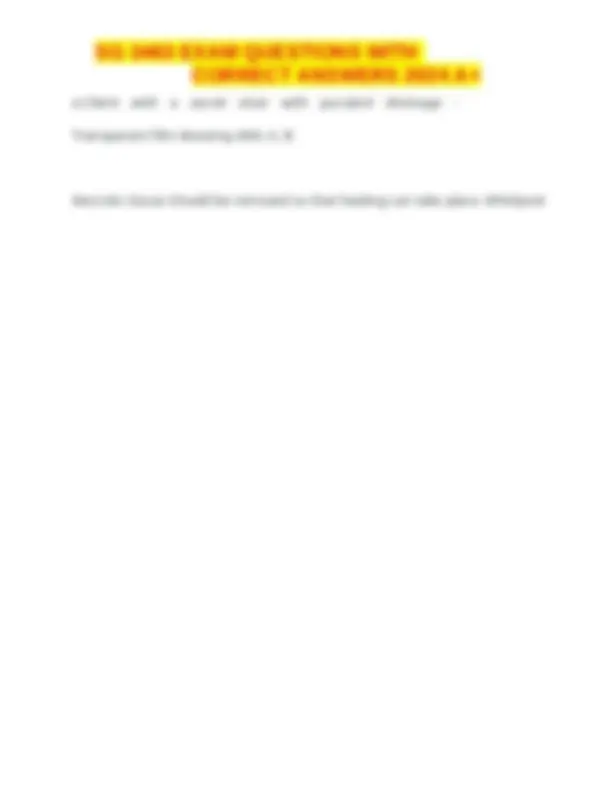
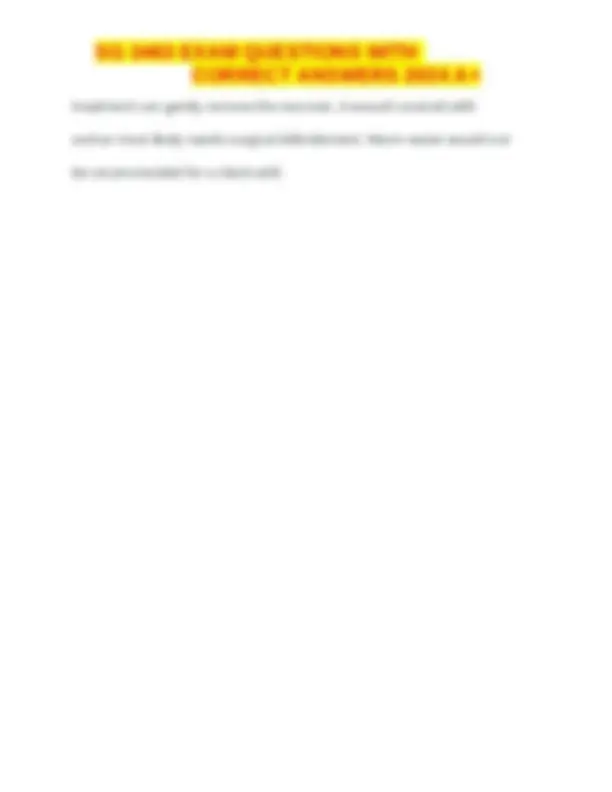
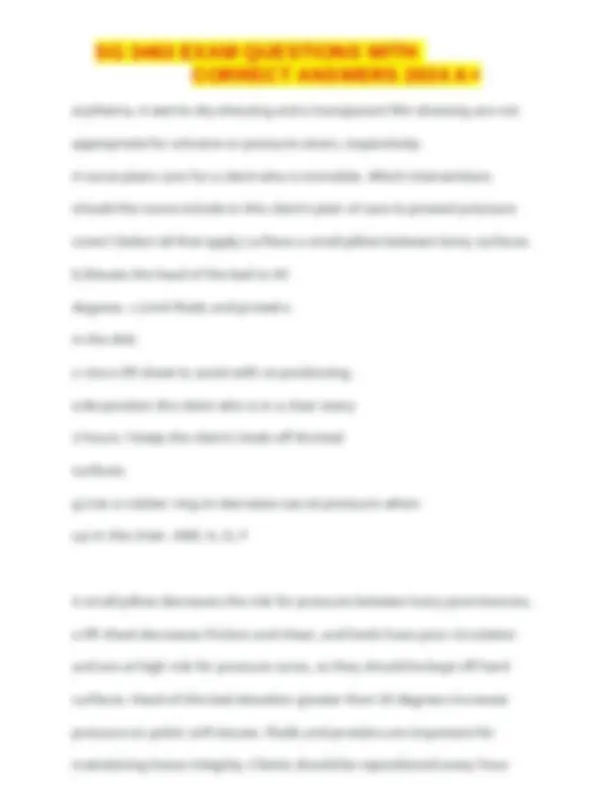
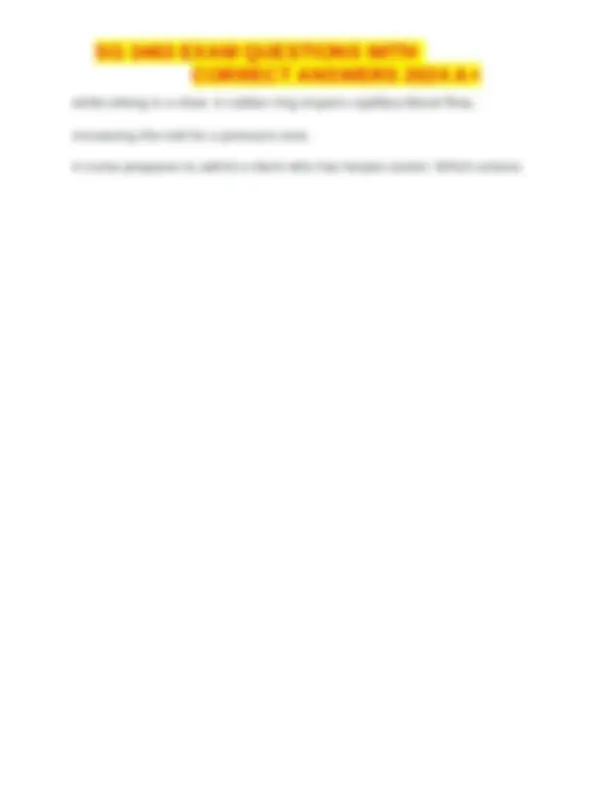
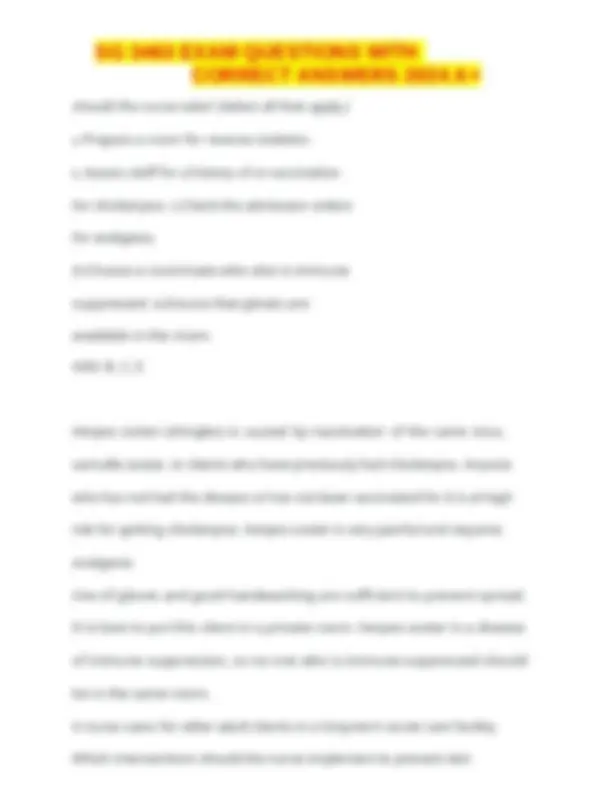
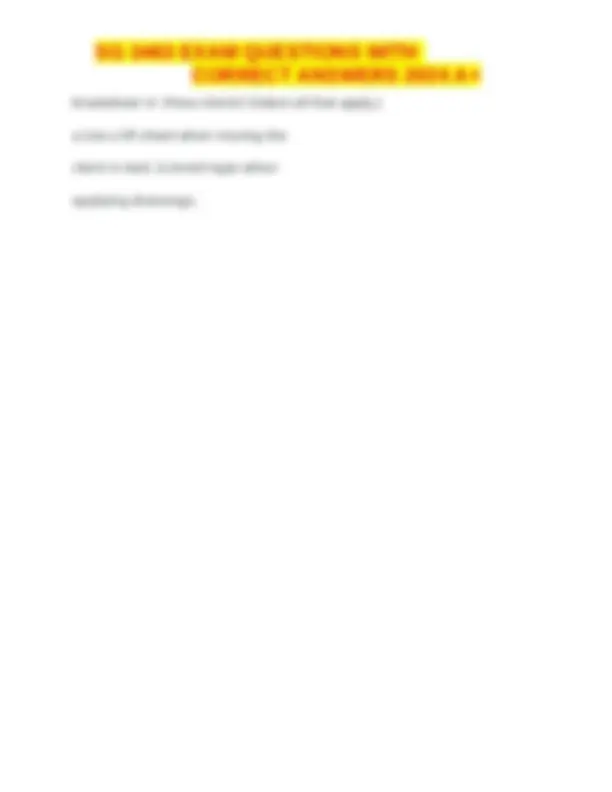
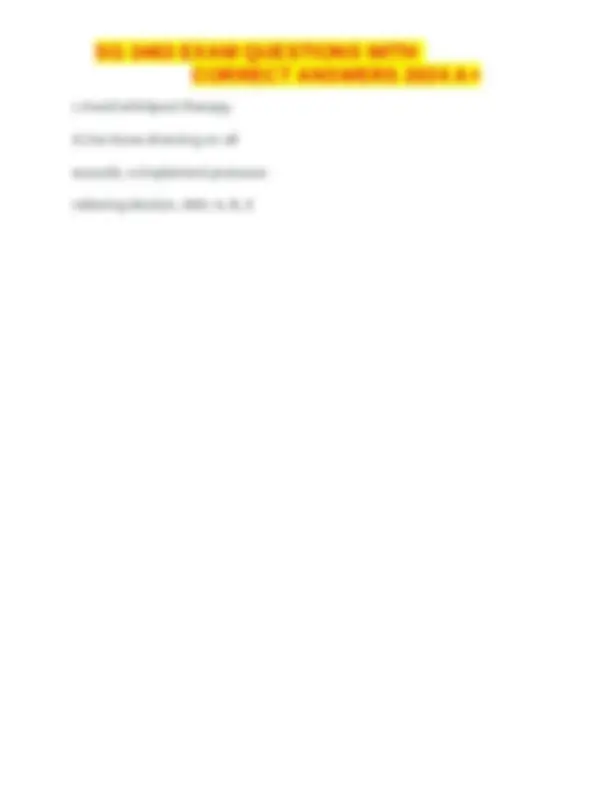
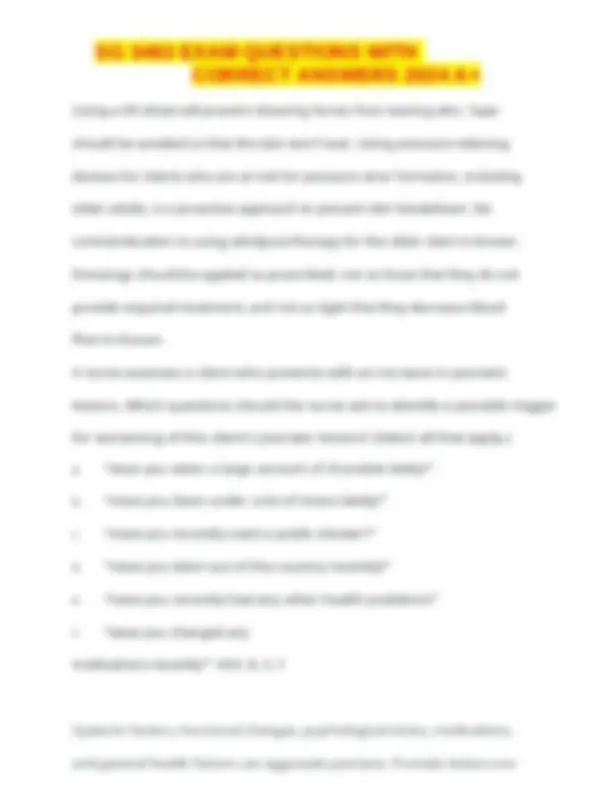
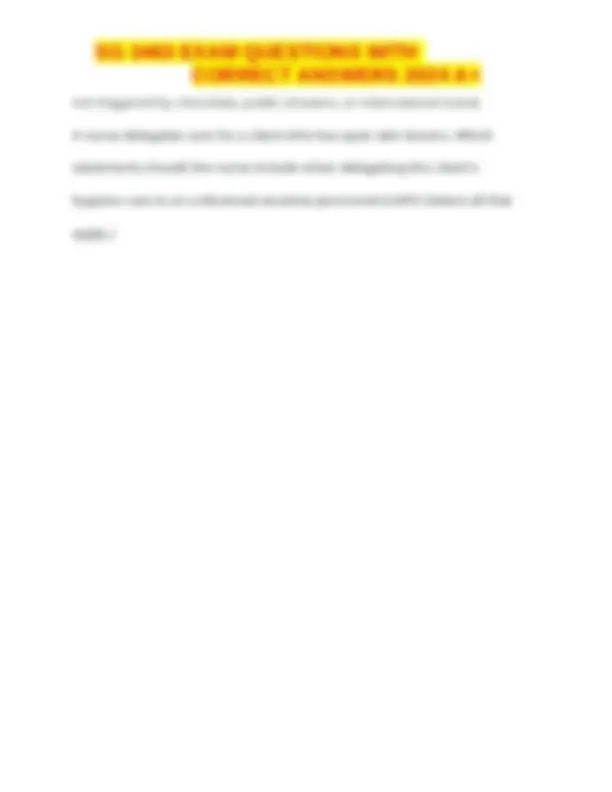
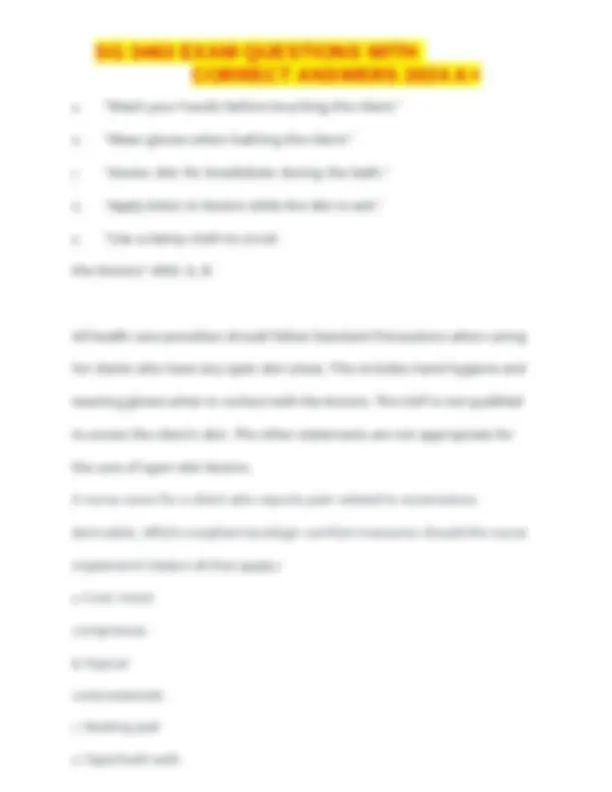
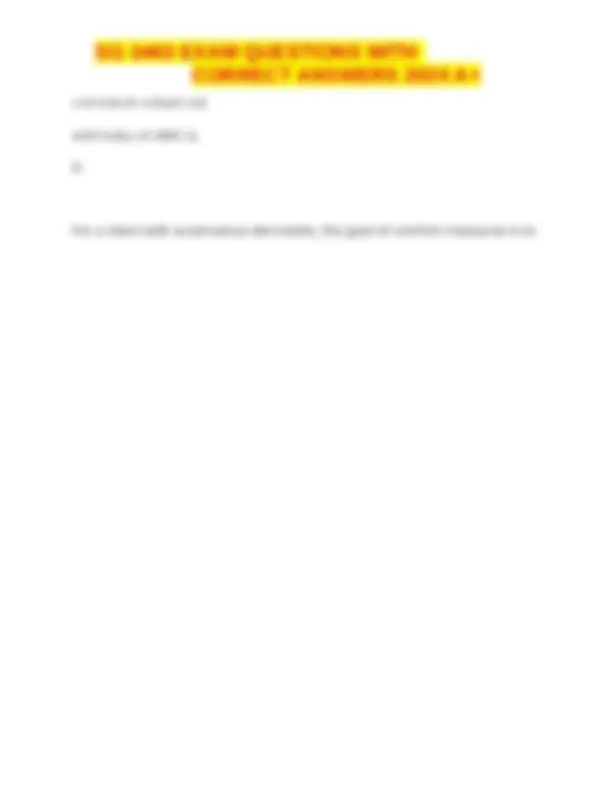
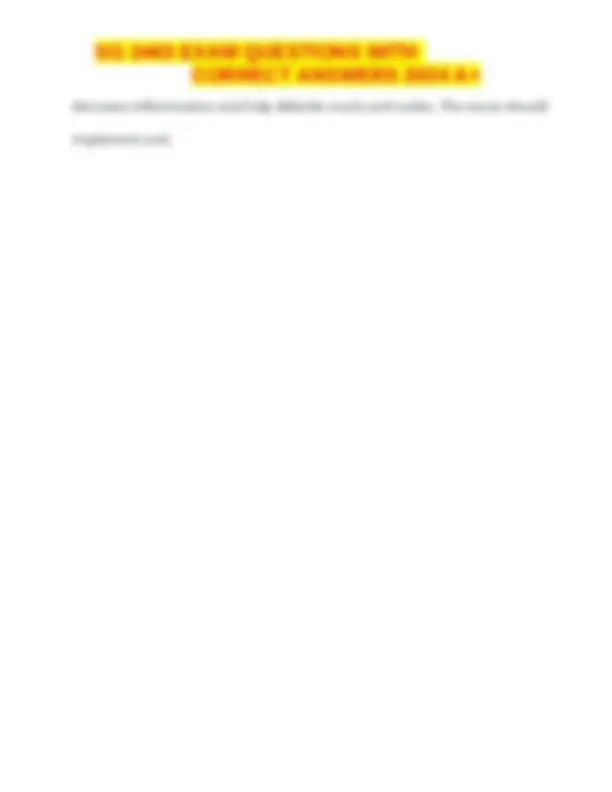
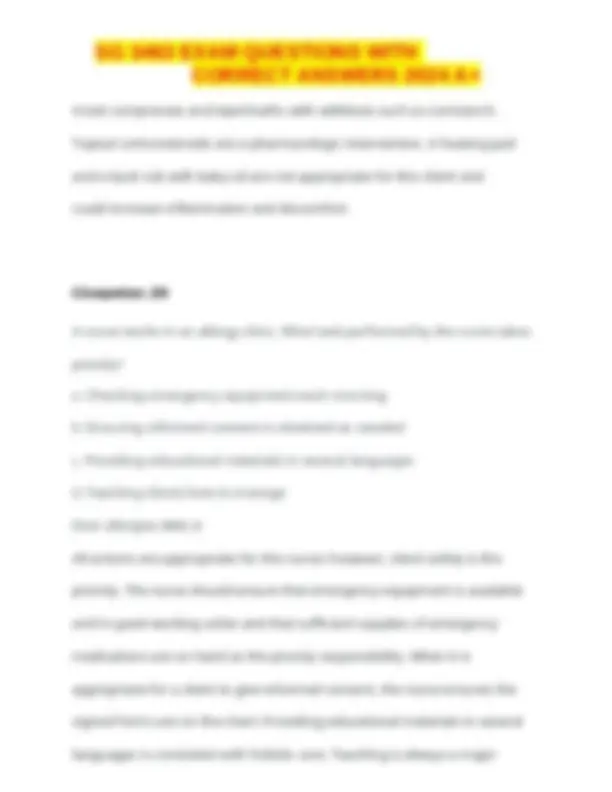
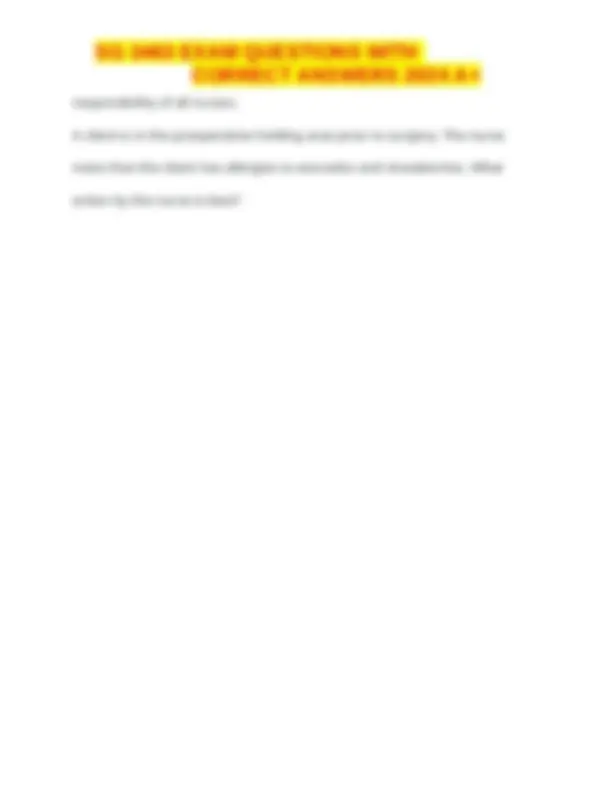
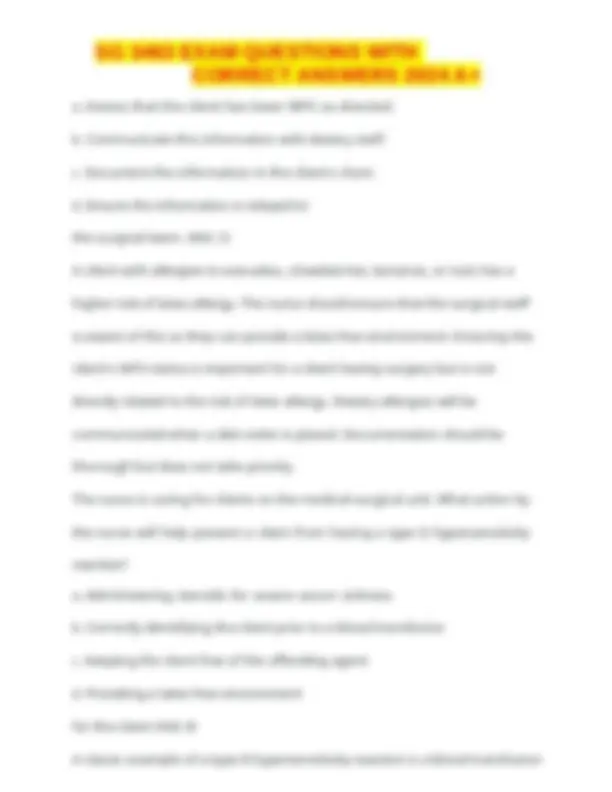
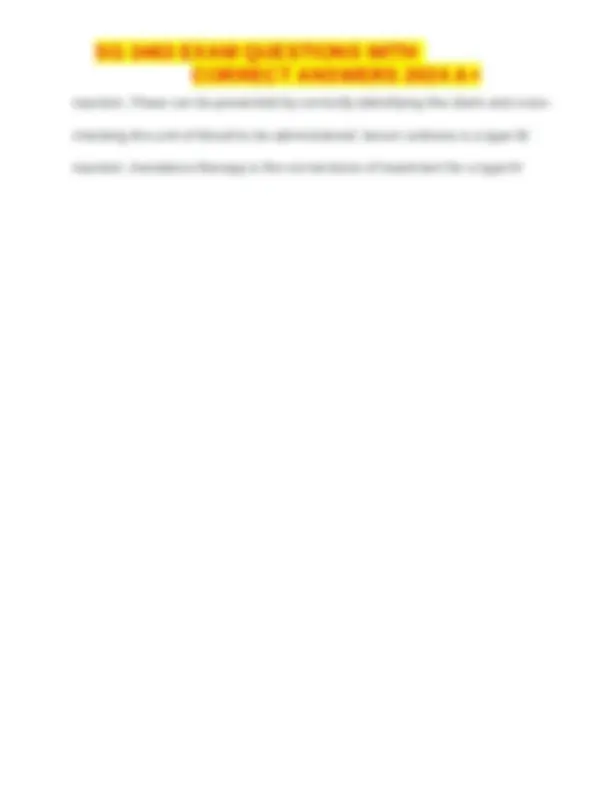
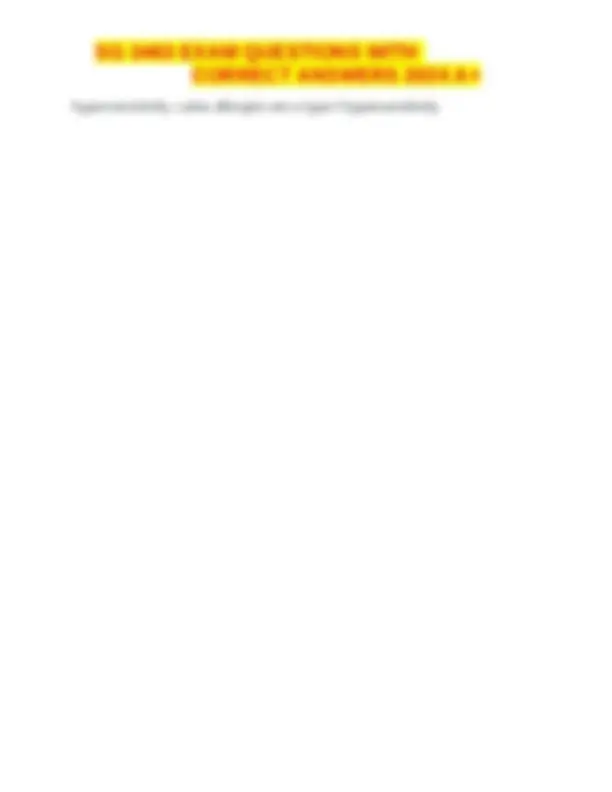
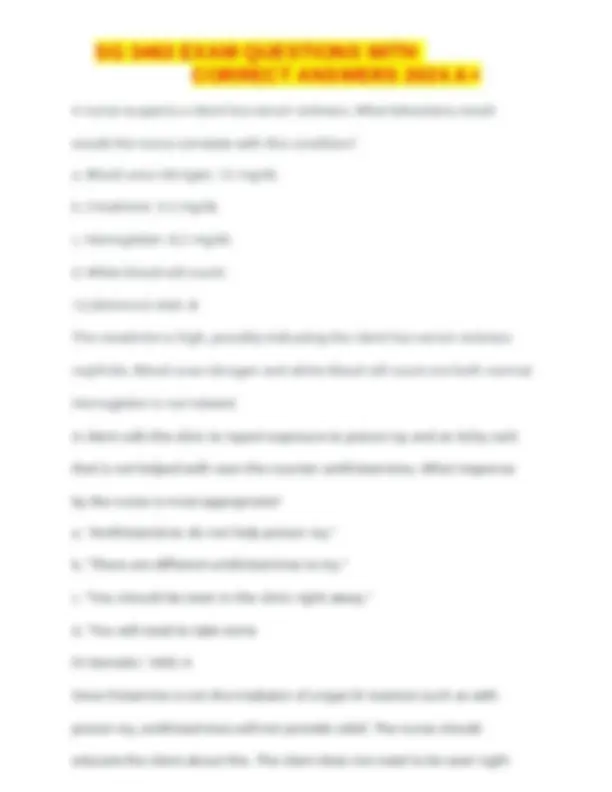
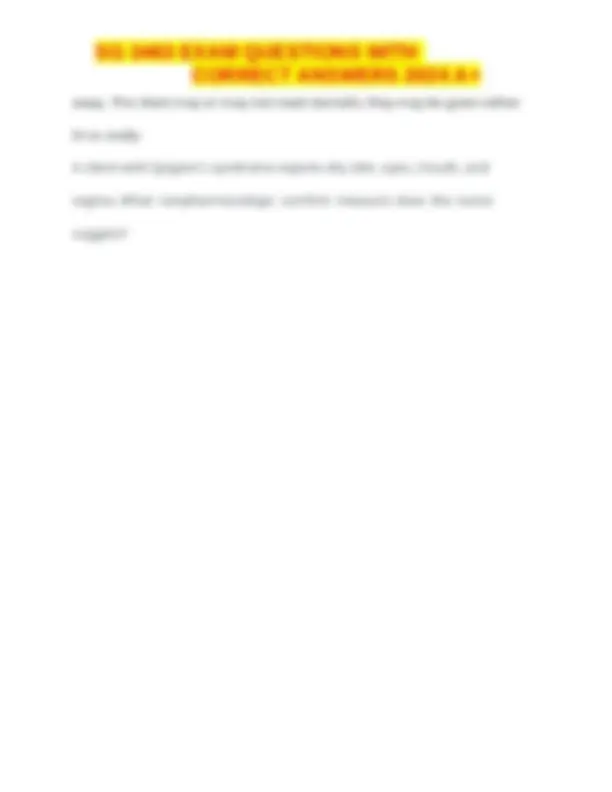
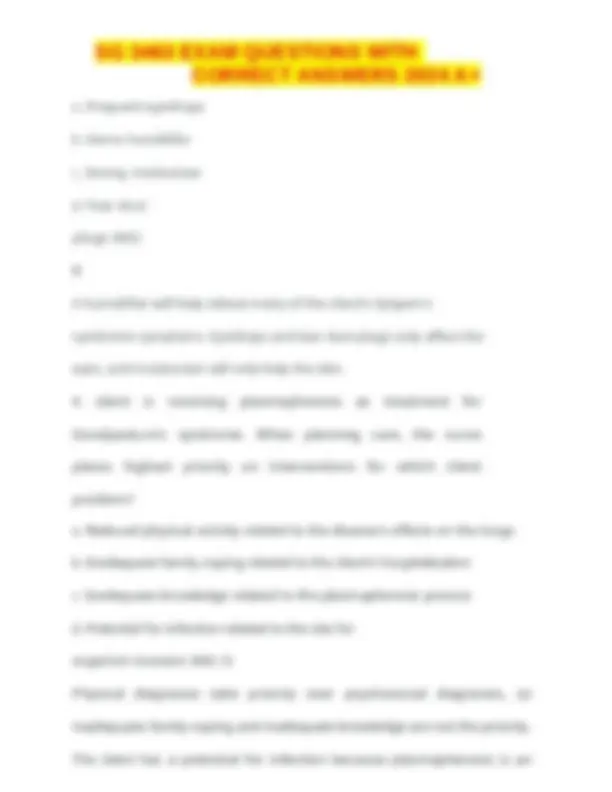
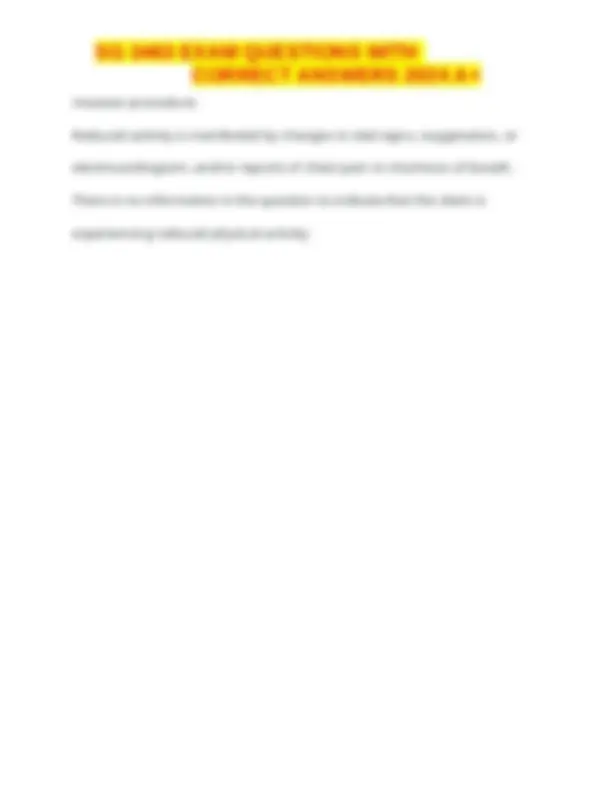
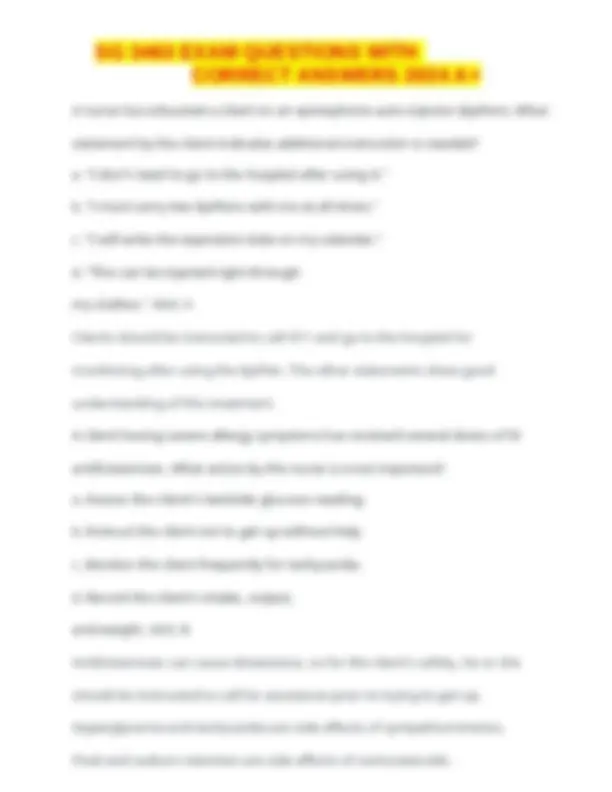
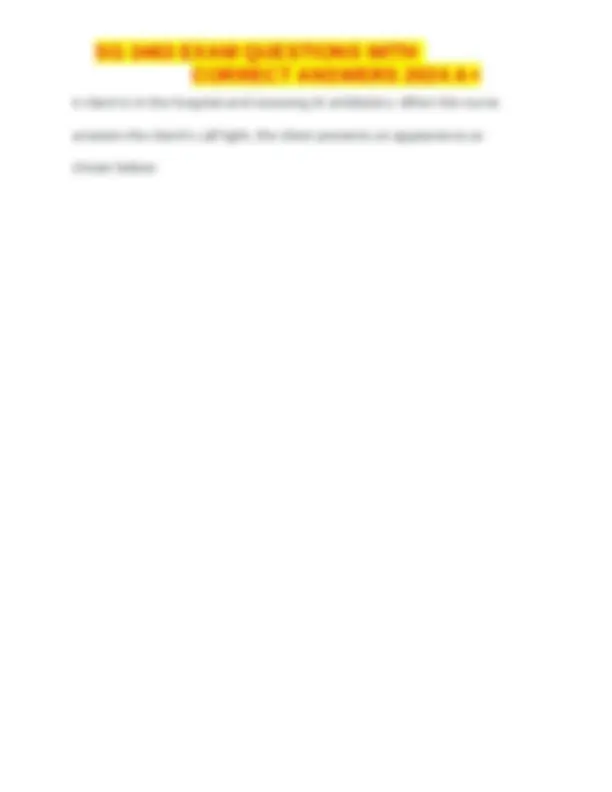
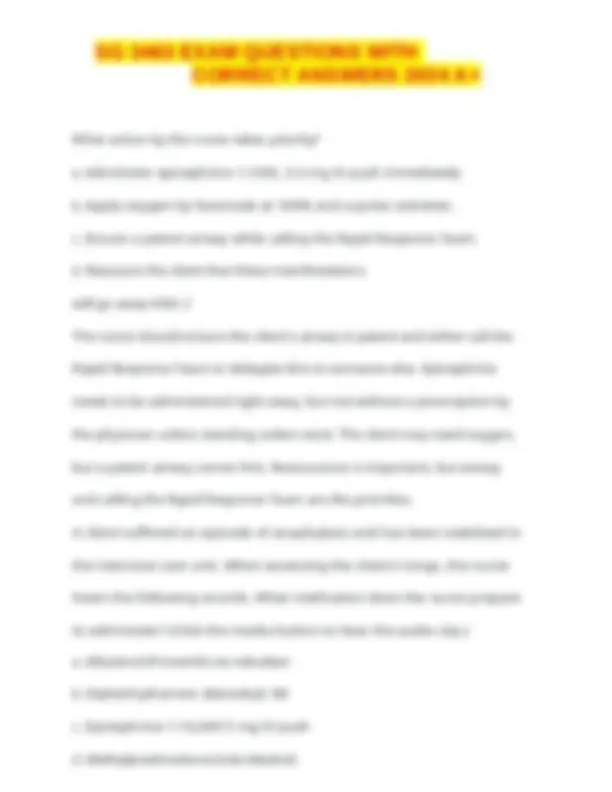
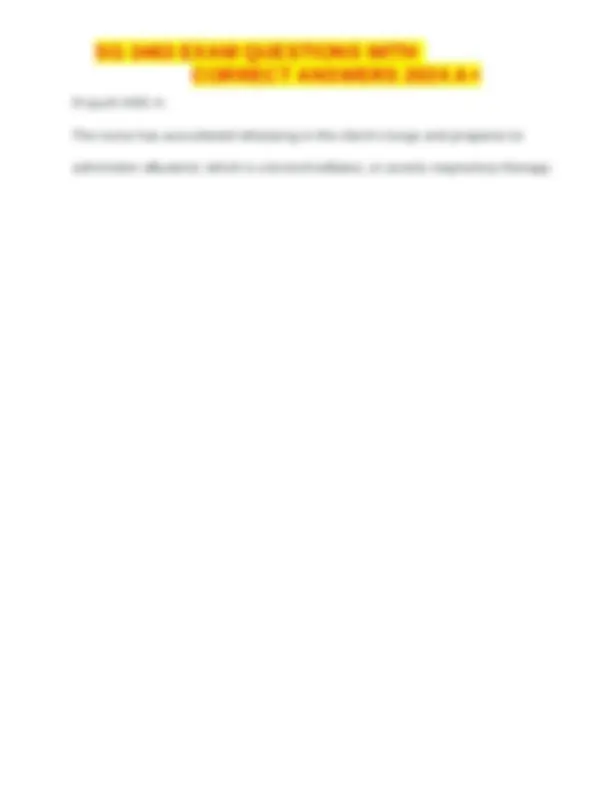
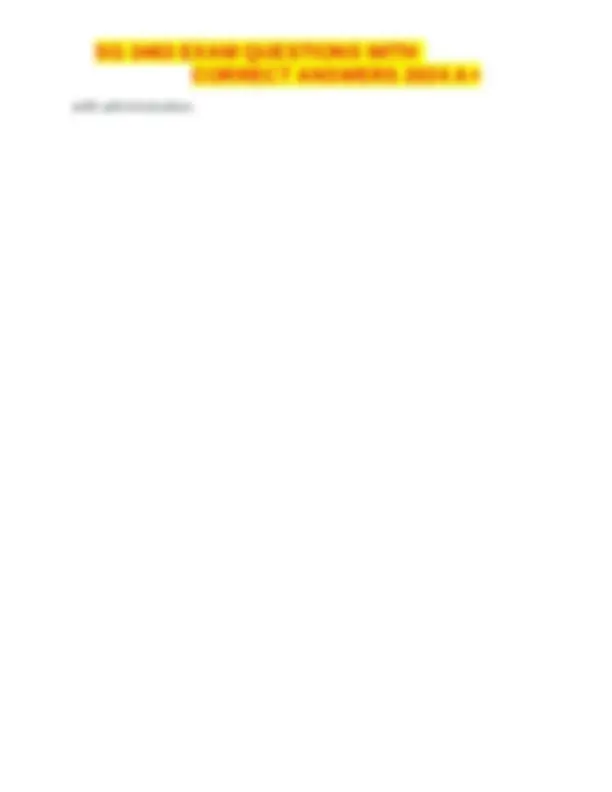
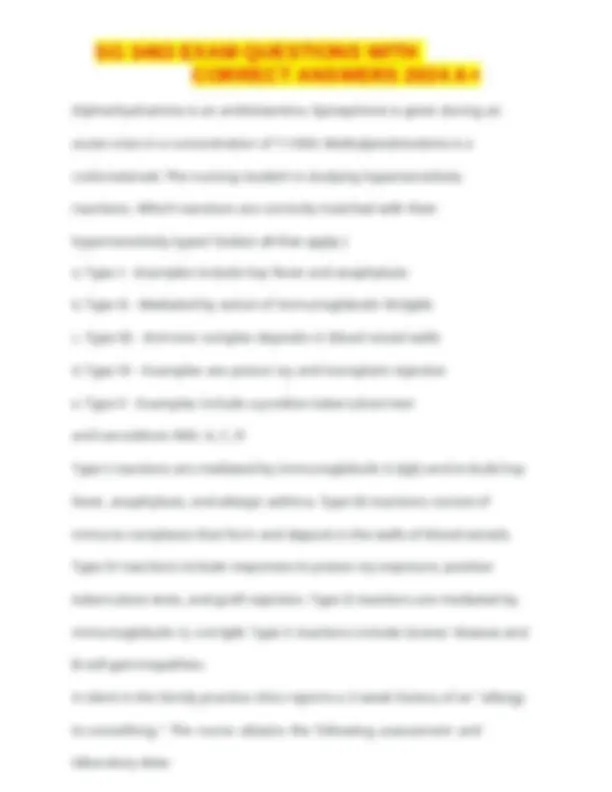
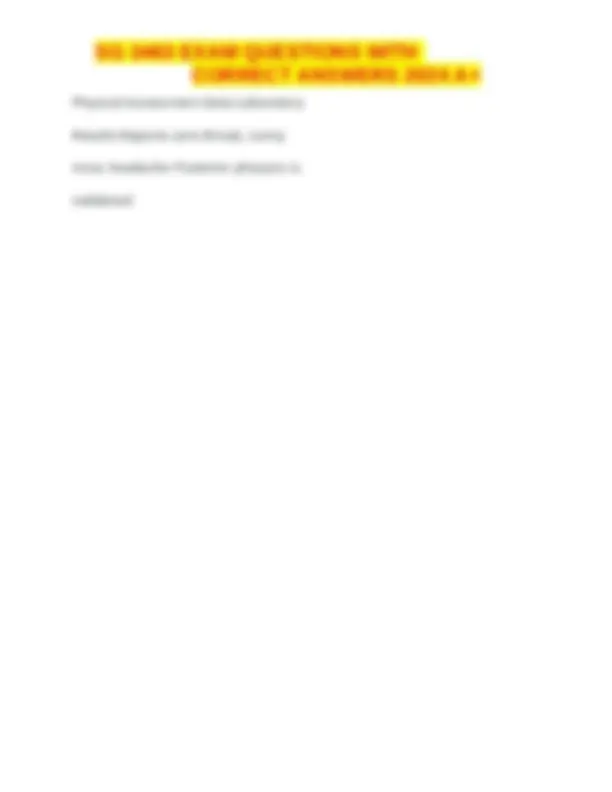
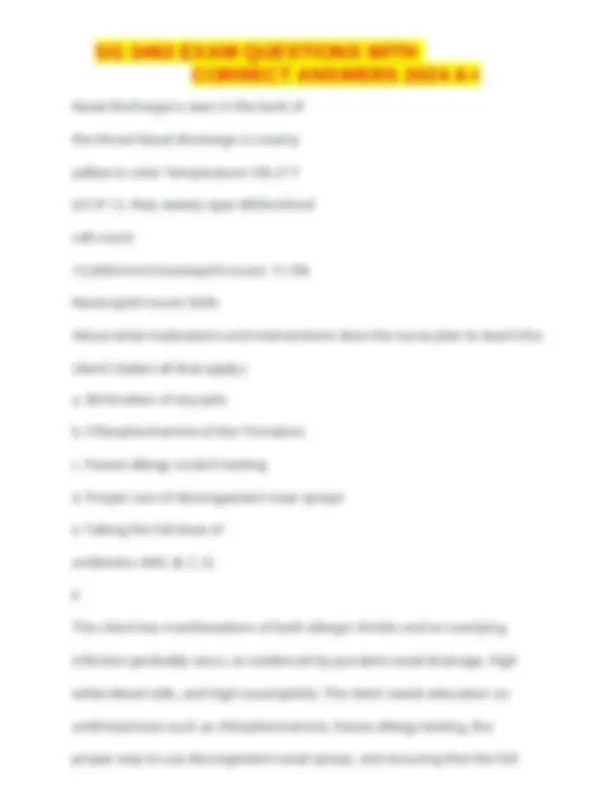
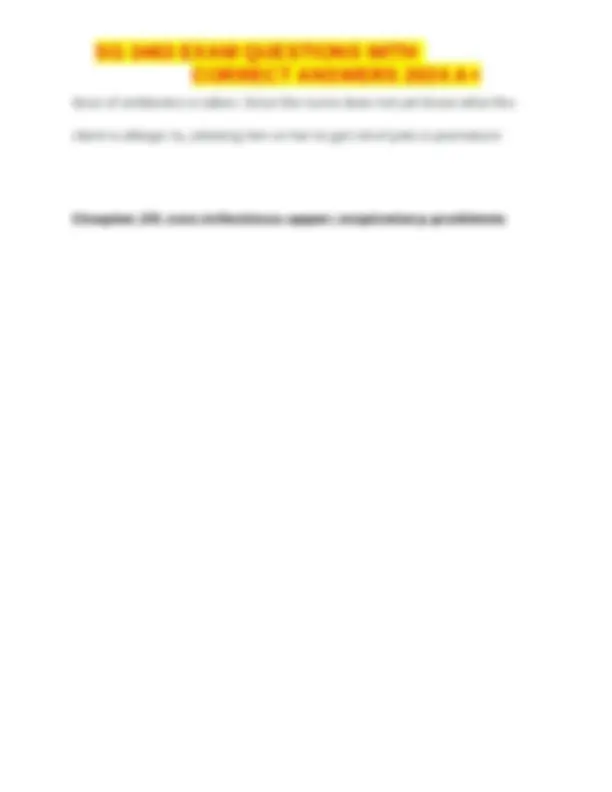
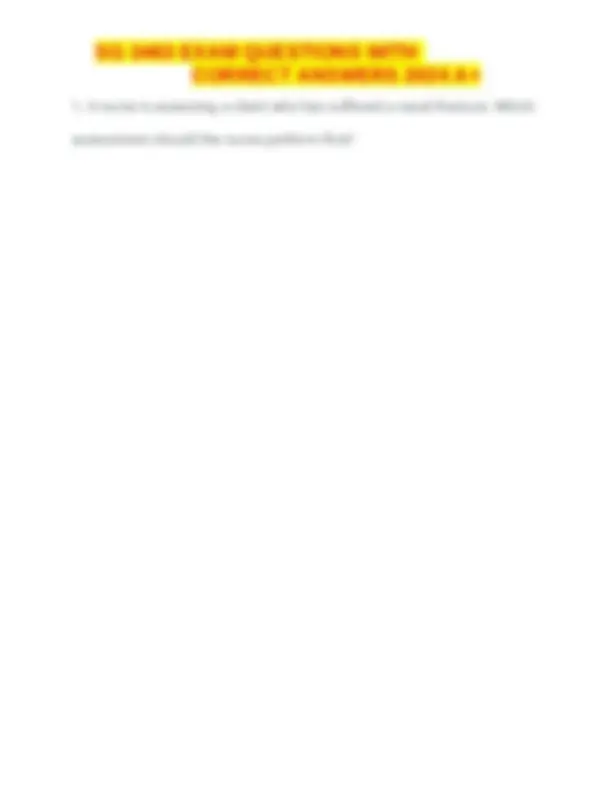
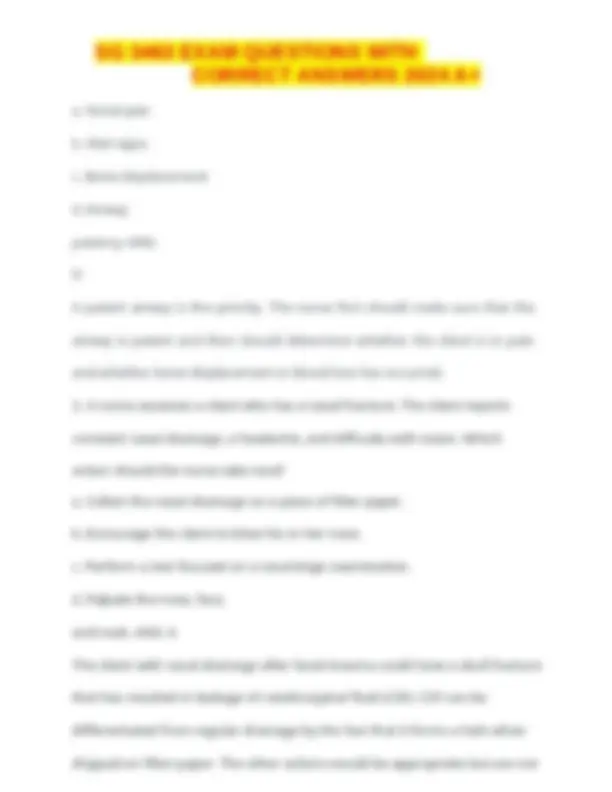
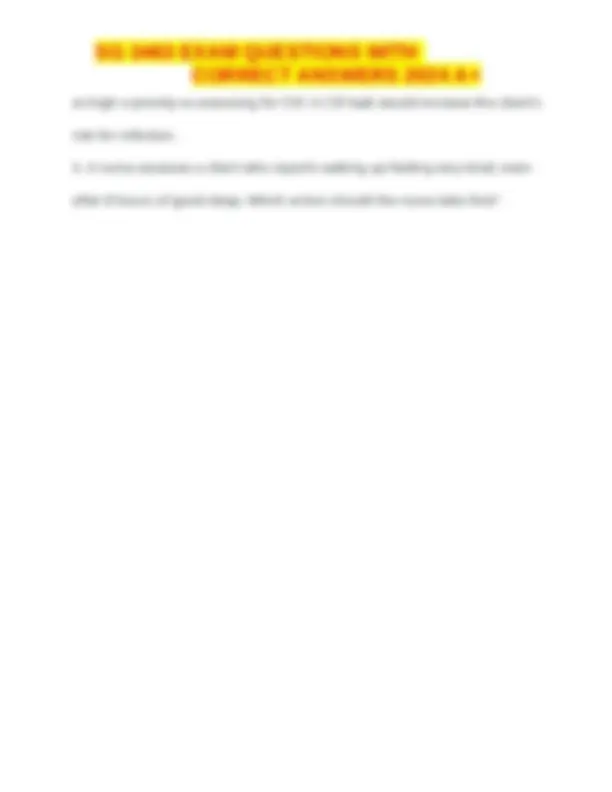
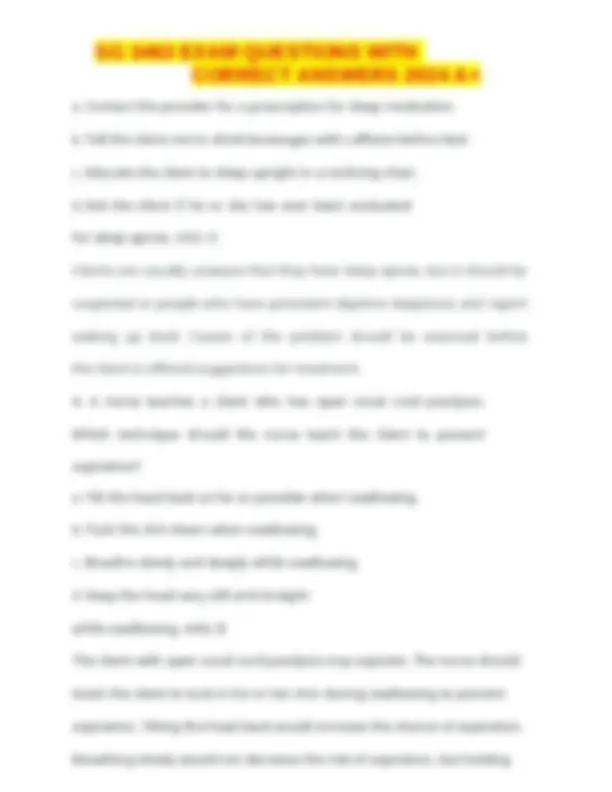
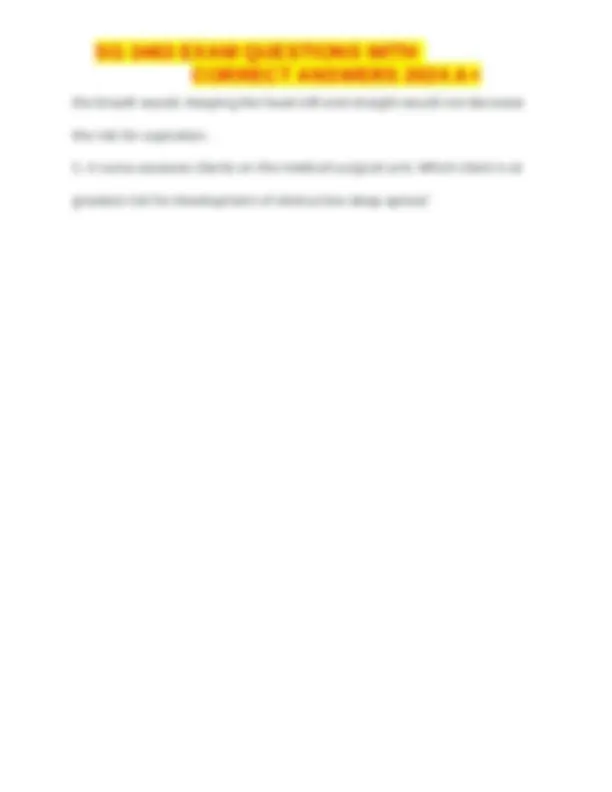
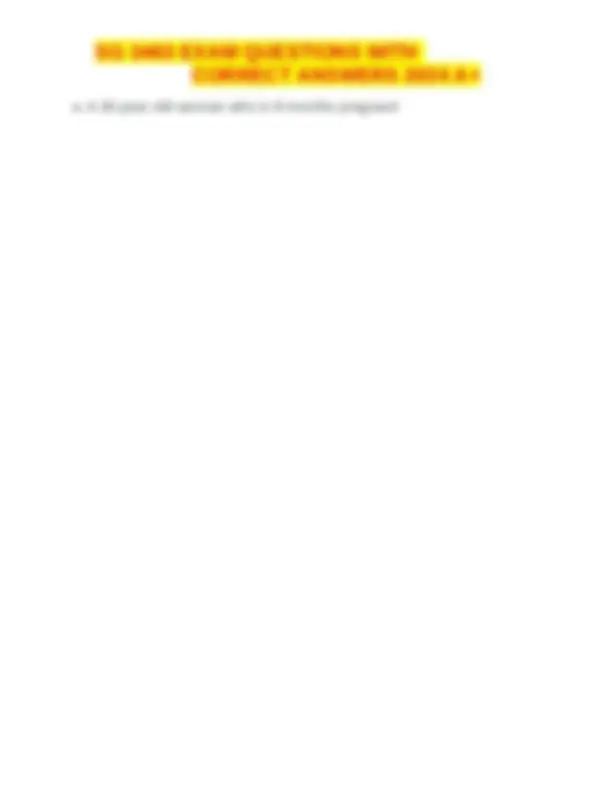
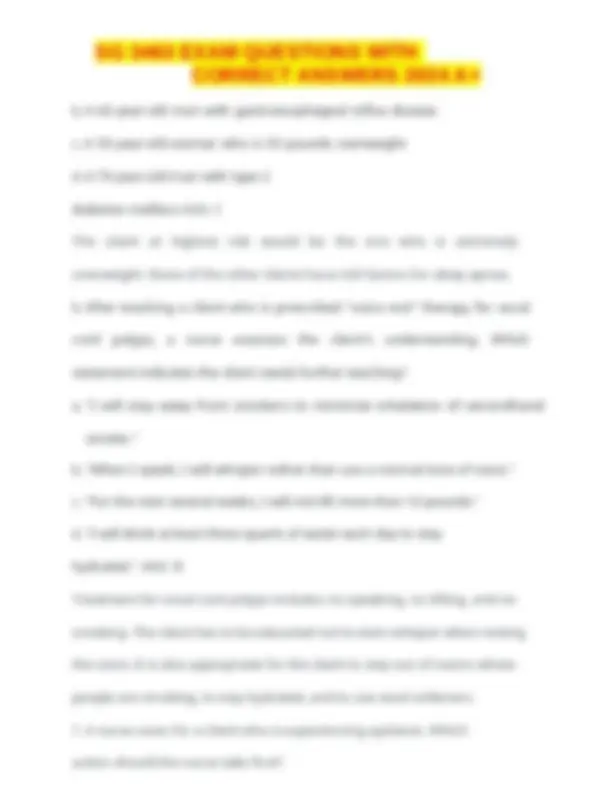
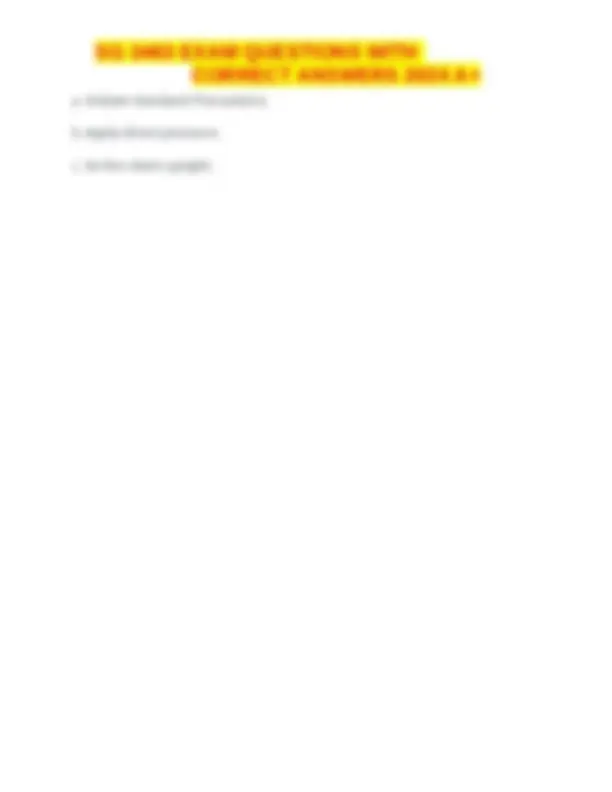
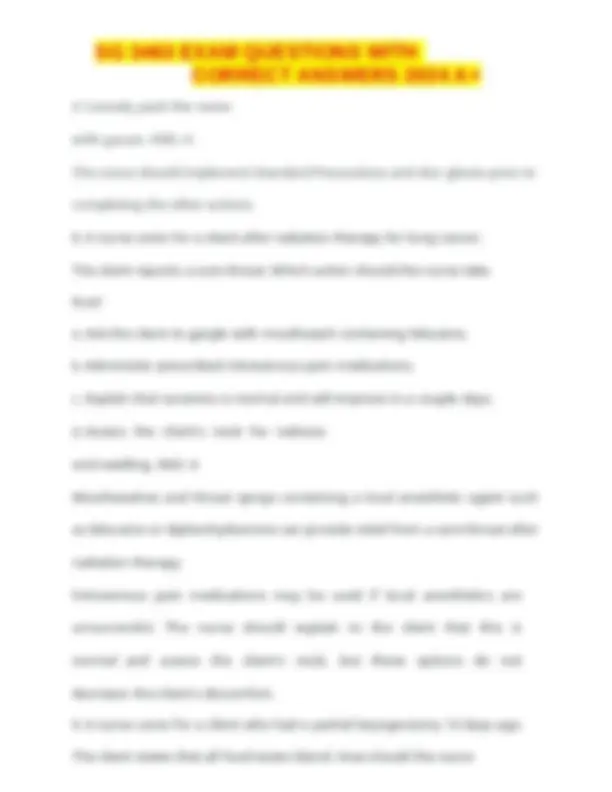
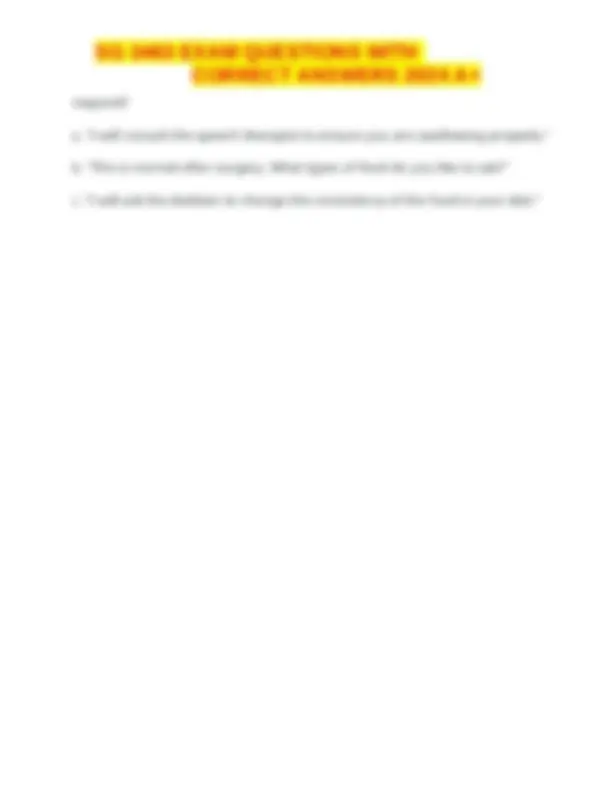
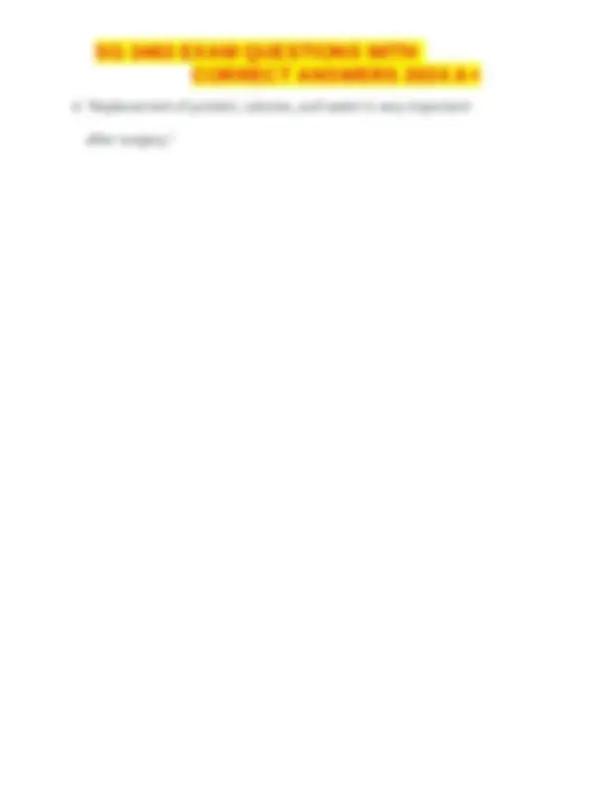
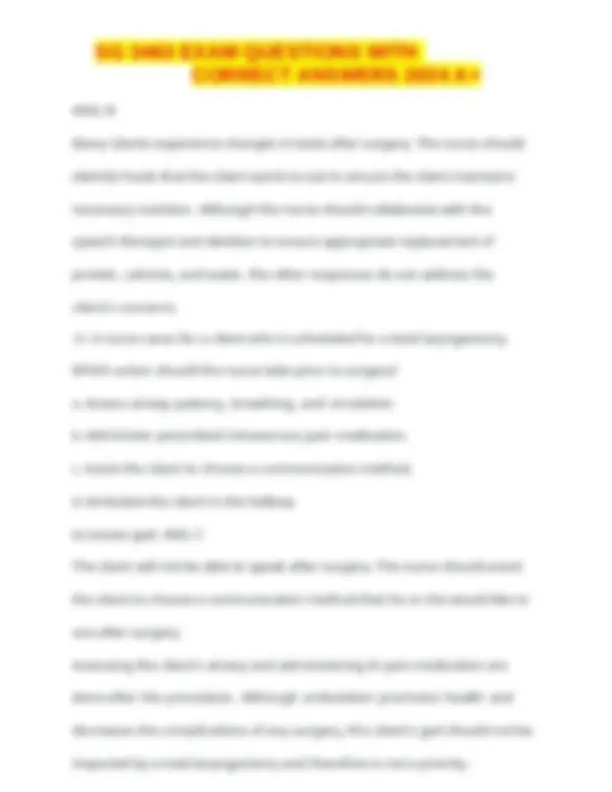
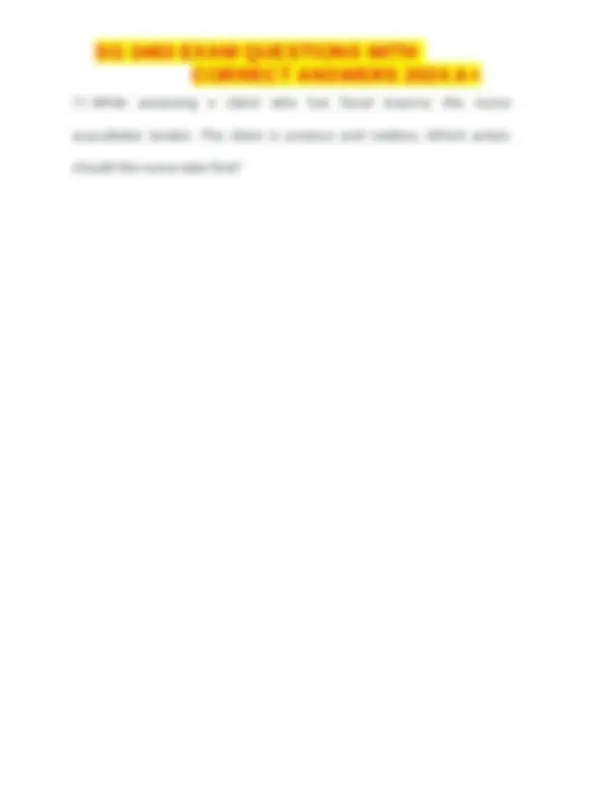
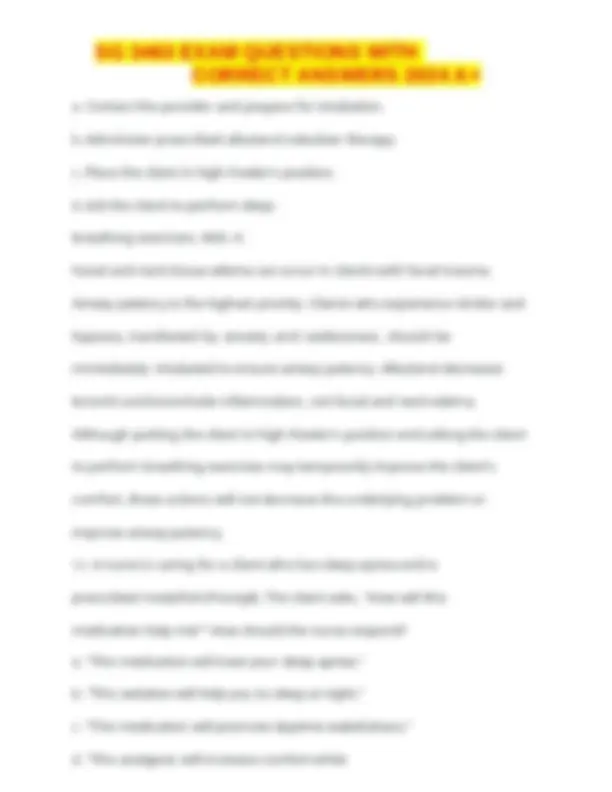
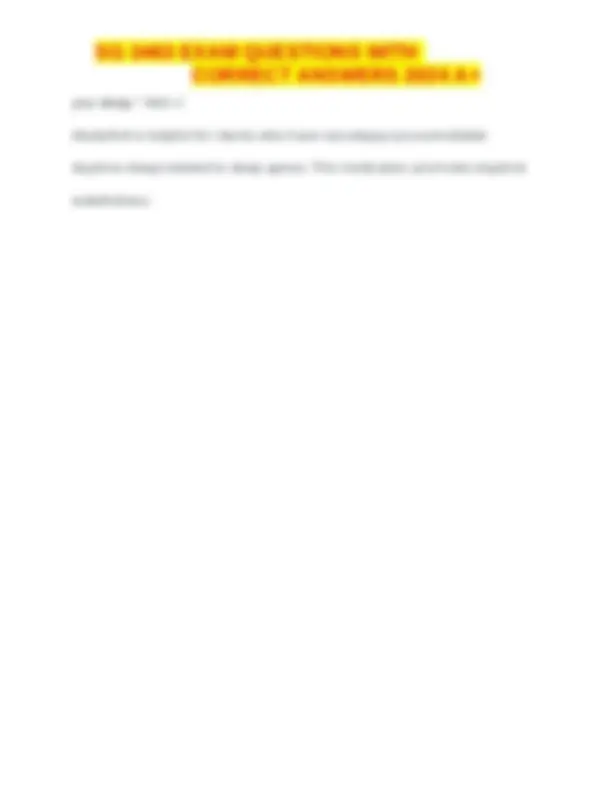
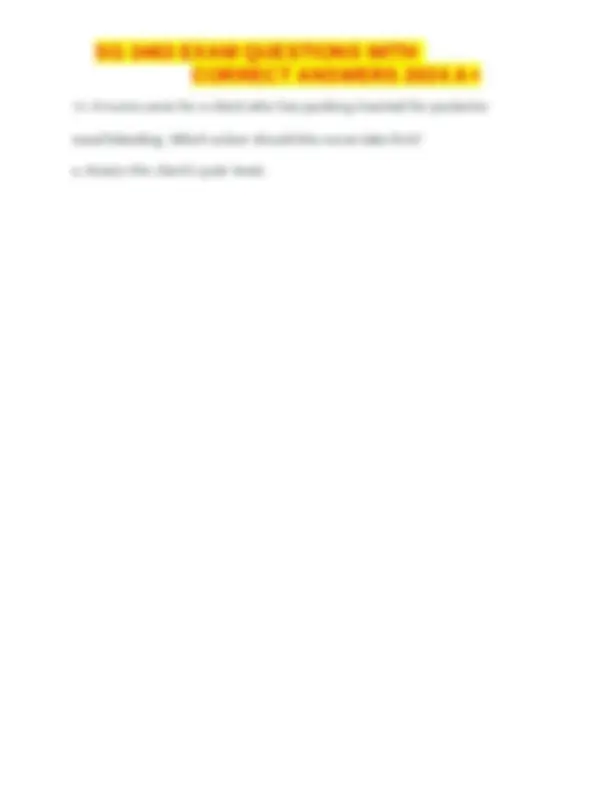
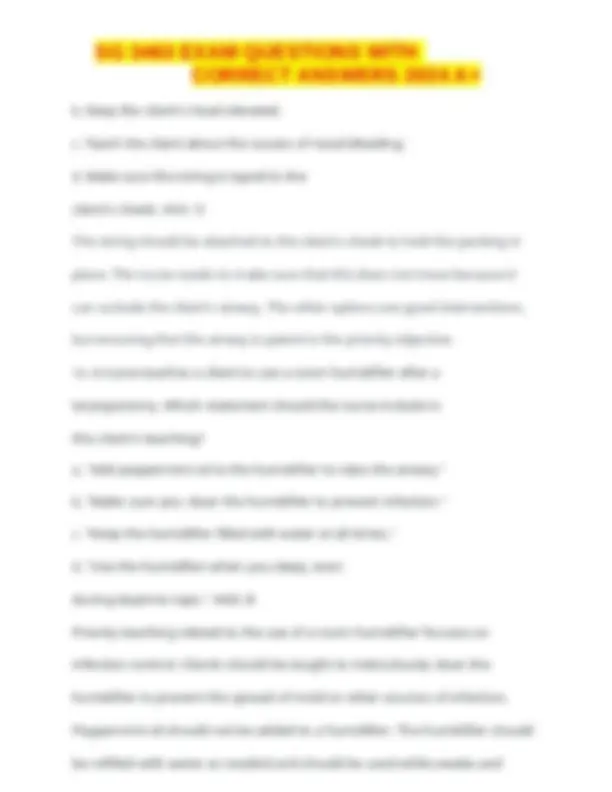
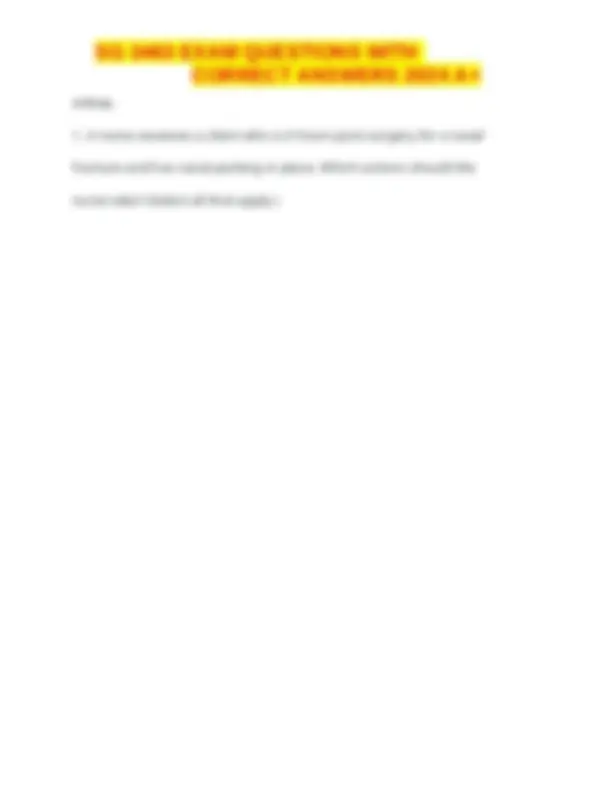
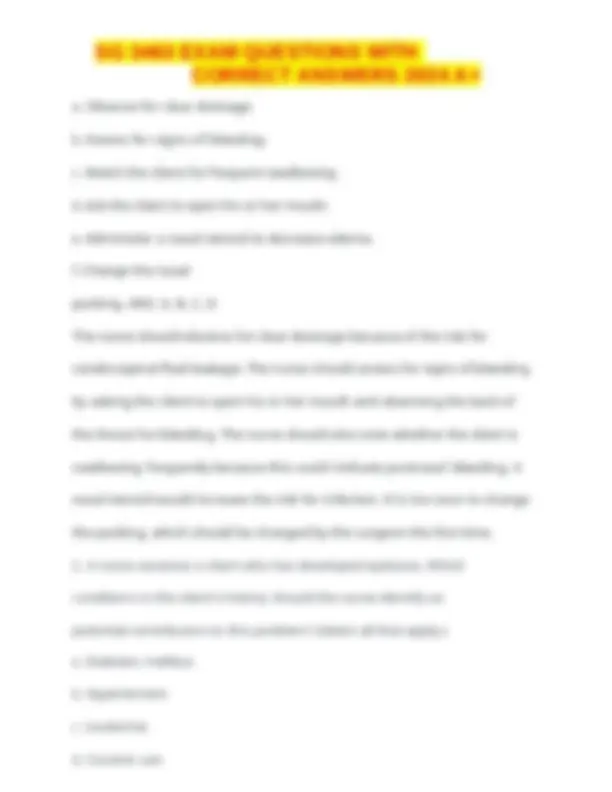
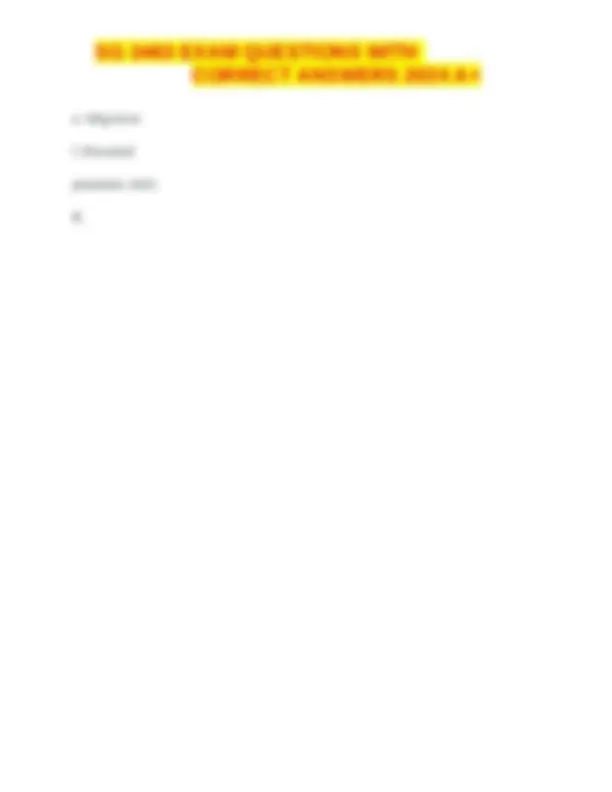
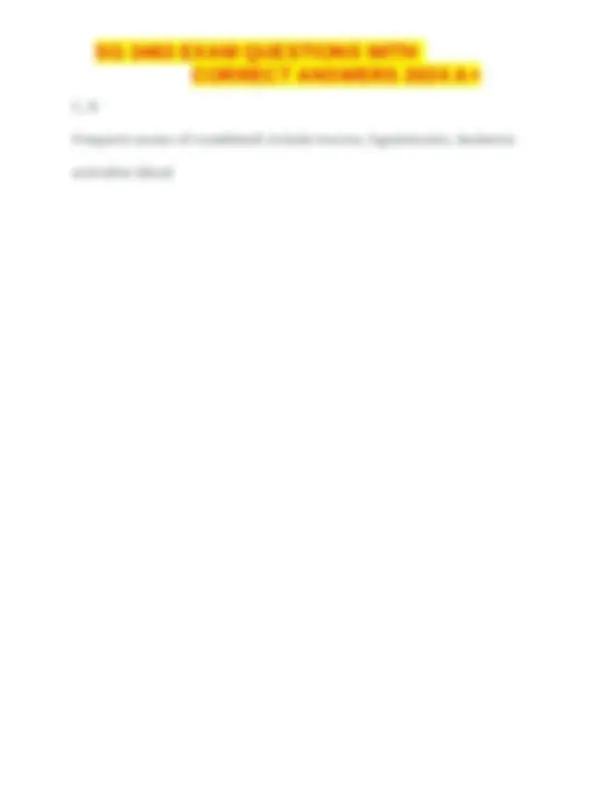
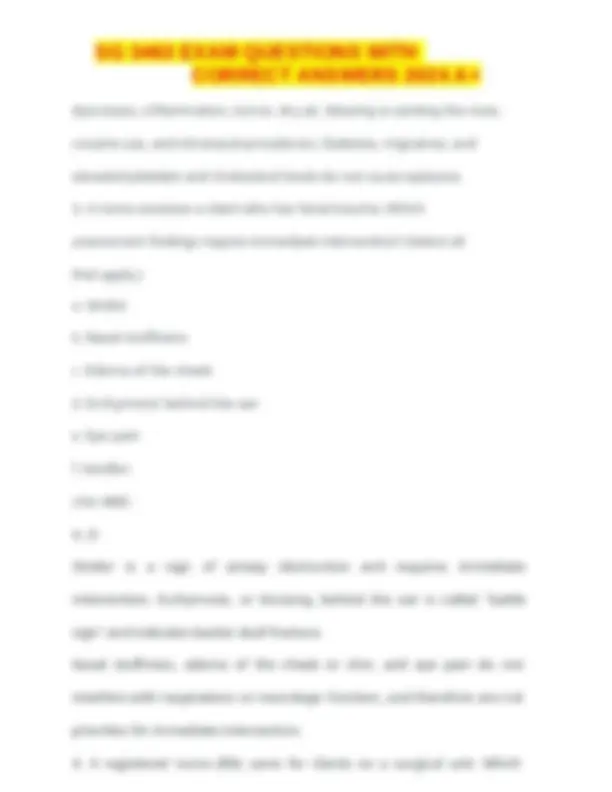
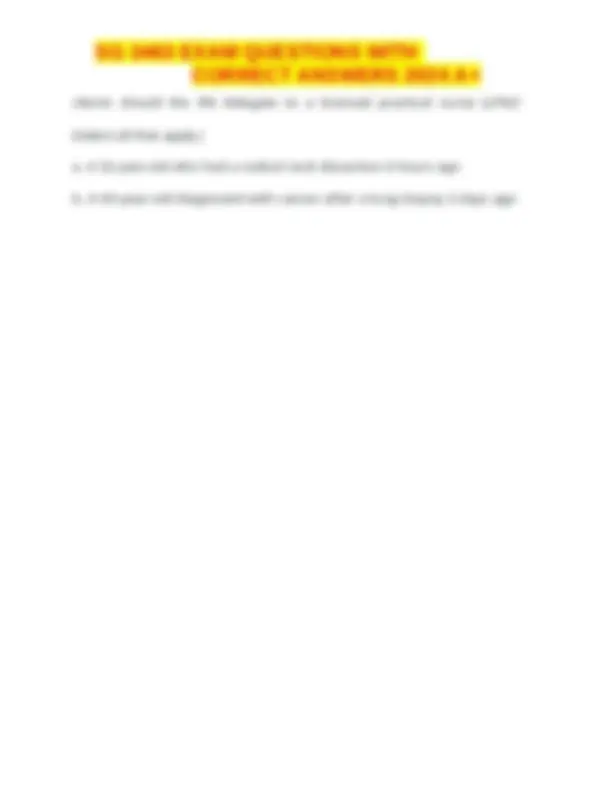
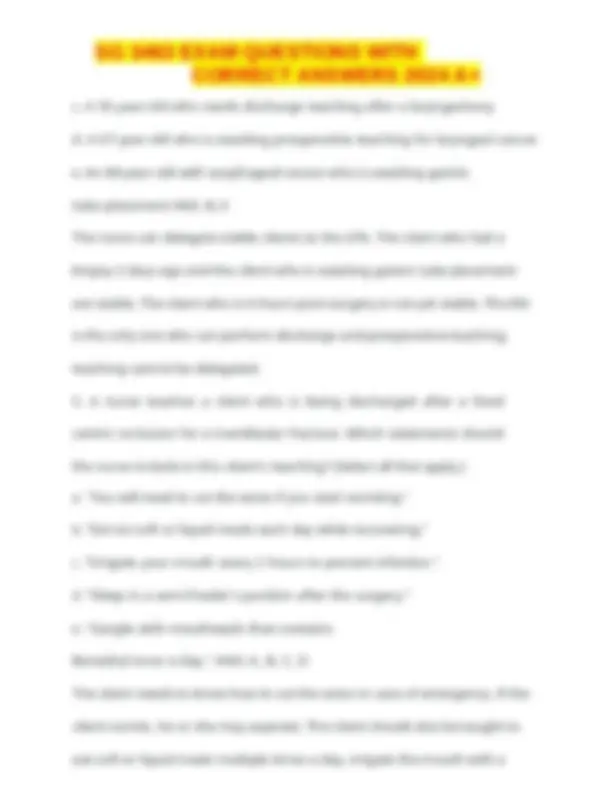
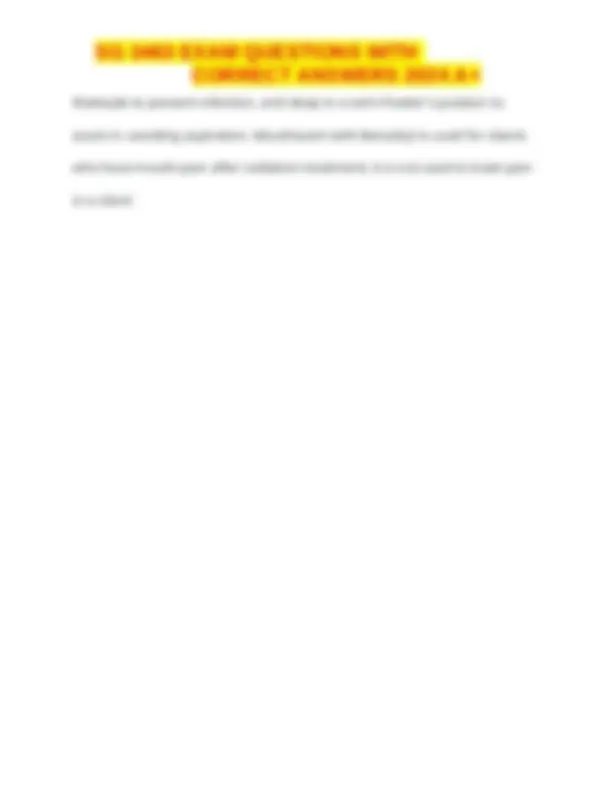
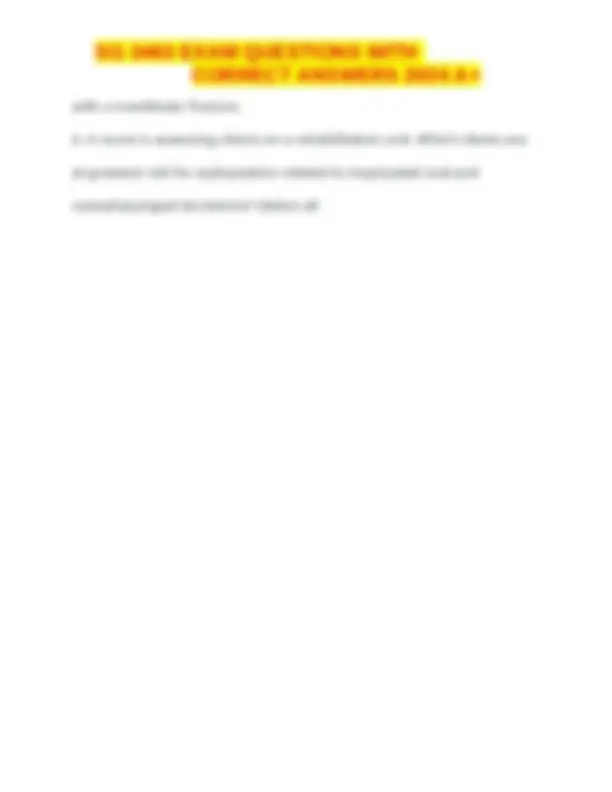
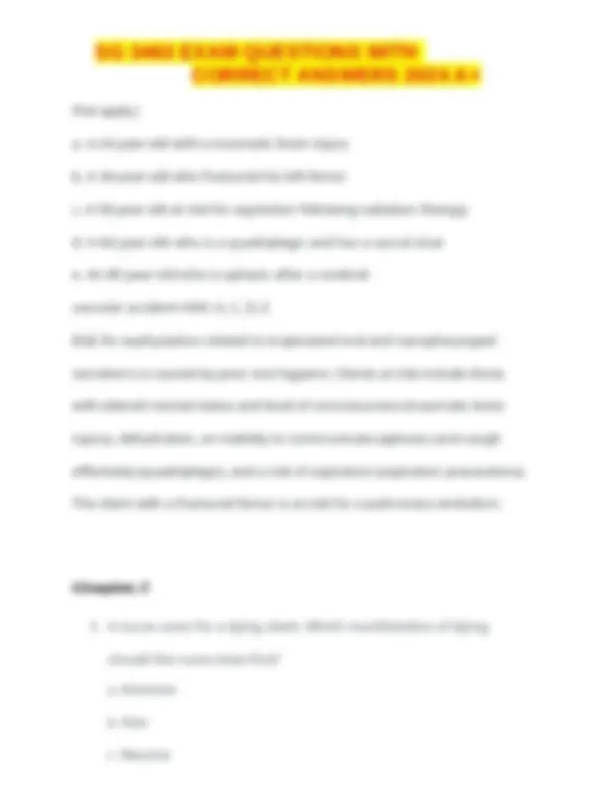


Study with the several resources on Docsity

Earn points by helping other students or get them with a premium plan


Prepare for your exams
Study with the several resources on Docsity

Earn points to download
Earn points by helping other students or get them with a premium plan
Community
Ask the community for help and clear up your study doubts
Discover the best universities in your country according to Docsity users
Free resources
Download our free guides on studying techniques, anxiety management strategies, and thesis advice from Docsity tutors
SG 3463 EXAM QUESTIONS WITH CORRECT ANSWERS 2024 A+
Typology: Exams
1 / 527

This page cannot be seen from the preview
Don't miss anything!





























































































Chapter 21 cancer development.
The nurse is giving a group presentation on cancer prevention and recognition. Which statement by an older adult client indicates understanding of the nurse's instructions? A "Cigarette smoking always causes lung cancer." B "Taking multivitamins will prevent me from developing cancer." C "If I have only one shot of whiskey a day, I probably will not develop cancer." D "I need to report the pain going down my legs to my health care provider." ANS: D Pain in the back of the legs could indicate prostate cancer in an older man. Cigarette smoking is implicated in causing lung cancer and other types of cancer, but it does not always cause cancer. Investigation is ongoing about the efficacy of vitamins A and C in cancer prevention. Limiting alcohol to one drink per day is only one preventive measure.
The nurse is teaching a 47-year-old woman about recommended screening practices for breast cancer. Which statement by the client indicates understanding of the nurse's instructions? A "My mother and grandmother had breast cancer, so I am at risk." B "I get a mammogram every 2 years since I turned 30." C "A clinical breast examination is performed every month since I turned 40." D "A computed tomography (CT) scan will be done every year after I turn 50." ANS: A A strong family history of breast cancer indicates a risk for breast cancer. Annual rather than biannual screening may be indicated for a strong family history. An annual mammogram is performed after age 40 or in younger clients with a strong family history. The client may perform a self-breast examination monthly; a clinical examination by a health care provider is indicated annually. Annual CT breast scans after age 50 are not a current recommendation.
A 72-year-old client recovering from lung cancer surgery asks the nurse to explain how she developed cancer when she has never smoked. Which factor may explain the possible cause? A A diagnosis of diabetes treated with insulin and diet B An exercise regimen of jogging 3 miles four times a week C A history of cardiac disease D Advancing age
Advancing age is the single most important risk factor for cancer. As a person ages, immune protection decreases. Diabetes is not known to cause lung cancer. Regular exercise is not a risk factor for lung cancer, nor does having cardiac disease predispose a person to lung cancer.
The nurse reviews the chart of a client admitted with a diagnosis of glioblastoma with a T1NXM classification. Which explanation does the nurse offer when the client asks what the terminology means? A "Two lymph nodes are involved in this tumor of the glial cells, and another tumor is present." B "The brain tumor measures about 1 to 2 cm and shows no regional lymph nodes and no distant metastasis." C "This type of tumor in the brain is small with some lymph node involvement; another tumor is present somewhere else in your body." D "Glioma means this tumor is benign, so I will have to ask your health care provider the reason for the chemotherapy and radiation." ANS: B T1 means that the tumor is increasing in size to about 2 cm, and that no regional lymph nodes are present in the brain. M0 means that no distant metastasis has occurred. NX means that no regional lymph nodes can be assessed. A glioma is a benign tumor of the brain, but the client is diagnosed with a glioblastoma, which means a malignant tumor of the glial cells of the brain.
The nurse manager in a long-term care facility is developing a plan for primary and secondary prevention of colorectal cancer. Which tasks associated with the screening plan will be delegated to nursing assistants within the facility? A Testing of stool specimens for occult blood B Teaching about the importance of dietary fiber C Referring clients for colonoscopy procedures D Giving vitamin and mineral supplements ANS: A Testing of stool specimens for occult blood is done according to a standardized protocol and can be delegated to nursing assistants. Client education is within the scope of practice of the RN, not of the LPN or nursing assistant. Referral for further care is best performed by the RN. Administration of medications is beyond the nursing assistant's scope of practice and should be done by licensed nursing personnel.
D Familial polyposis ANS: A Hepatitis B and C are risk factors for primary liver cancer. Alcohol abuse is also a risk factor for the development of liver cancer. Consuming a diet high in animal fat may predispose a person to colon or breast cancer. Exposure to radon is a risk factor for lung cancer. Familial polyposis is a risk factor for colorectal cancer.
Which type of cancer has been associated with Down syndrome? A Breast cancer B Colorectal cancer C Malignant melanoma D Leukemia ANS: D Leukemia is associated with Down syndrome and Turner syndrome. Breast cancer is often found clustered in families, not in association with Down syndrome. Colorectal cancer is associated with familial polyposis. Malignant melanoma is associated with familial clustering and sun exposure.
The nurse is assessing a client with lung cancer. Which symptom does the nurse anticipate finding? A Easy bruising B Dyspnea C Night sweats D Chest wound ANS: B Dyspnea is a sign of lung cancer, as are cough, hoarseness, shortness of breath, bloody sputum, arm or chest pain, and dysphagia. Easy bruising is a nonspecific finding. Night sweats is a symptom of the lymphomas. A chest wound is not specific to lung cancer.
Which activity performed by the community health nurse best reflects primary prevention of cancer? A Assisting women to obtain free mammograms B Teaching a class on cancer prevention C Encouraging long-term smokers to get a chest x-ray
D Encouraging sexually active women to get annual Papanicolaou (Pap) smears ANS: B Primary prevention involves avoiding exposure to known causes of cancer; education assists clients with this strategy. Mammography is part of a secondary level of prevention, defined as screening for early detection. Chest x-ray is a method of detecting a cancer that is present—secondary prevention and early detection. A Pap smear is a means of detecting cervical cancer early—secondary prevention.
A 52-year-old client relates to the nurse that she has never had a mammogram because she is terrified that she will have cancer. Which response by the nurse is therapeutic? A "Don't worry, most lumps are discovered by women during breast self-examination." B "Does anyone in your family have breast cancer?" C "Finding a cancer in the early stages increases the chance for cure." D "Have you noticed a lump or thickening in your breast?" ANS: C Providing truthful information addresses the client's concerns. Mammography can detect lumps smaller than those discovered by palpation. Asking about family history or symptoms is not therapeutic because it does not address the client's fear of cancer.
Which information must the organ transplant nurse emphasize before a client is discharged? A "Taking immunosuppressant medications increases your risk for cancer and the need for screenings." B "You are at increased risk for cancer when you reach 60 years of age." C "Immunosuppressant medications will decrease your risk for developing cancers." D "After 6 months, you may stop immunosuppressant medications, and your risk for cancer will be the same as that of the general population." ANS: A Use of immunosuppressant medications to prevent organ rejection increases the risk for cancer. Advanced age is a risk factor for all people, not just for organ transplant recipients. Immunosuppressant medications must be taken for the life of the organ; the risk for developing cancer remains.
The home health nurse is caring for a client who has a history of a kidney transplant and takes cyclosporine (Sandimmune) and prednisone (Deltasone) to prevent rejection. Which assessment finding is most important to communicate to the transplant team? A Temperature of 96.6° F
he can change. Ethnicity, gender, and increasing age are associated with lung cancer, but they are not modifiable risks.
Which statement about the process of malignant transformation is correct? A Mutation of genes is an irreversible event that always leads to cancer development in the initiation phase. B Insulin and estrogen enhance the division of an initiated cell during the promotion phase. C Tumors form when carcinogens invade the gene structure of the cell in the latency phase. D Nutrition of cancer cells is provided by tumor angiogenesis factor (TAF) in the promotion stage. ANS: D The promotion phase consists of progression when the blood supply changes from diffusion to TAF.Insulin and estrogen increase cell division. If cell division is halted, mutation of genes does not lead to cancer development in the initiation phase. In the initiation phase, carcinogens invade the DNA of the nucleus of a single cell. A 1-cm tumor consists of 1 billion cells. The latency phase occurs between initiation and tumor formation.
A client has a glioblastoma. The nurse begins to plan care for this client with which type of cancer? A Liver B Smooth muscle C Fatty tissue D Brain ANS: D The prefix "glio-" is used when cancers of the brain are named. The prefix "hepato-" is included when cancers of the liver are named. The prefix "leiomyo-" is included when cancers of smooth muscle are named. The prefix "lipo-" is included when cancers of fat or adipose tissue are named.
A client has a diagnosis of lung cancer. To which areas does the nurse anticipate that this client's tumor may metastasize? (Select all that apply.) A Brain B Bone C Lymph nodes D Kidneys E Liver ANS: A, B, C, E
B Scab present for 6 months C Curdlike vaginal discharge D Axillary swelling E Headache ANS: A, B, D Change in bowel habits, a sore that does not heal, and a lump or thickening in the breast or elsewhere are all potential warning signs of cancer. Curdlike vaginal discharge represents a yeast infection. Headache is not a warning sign, but may be present with multiple problems. Chapter 25: pt’s with skin problem